(purely personal views as always, based on two decades of prior research and publications)
What would it have looked like if Nicolae Ceausescu’s Securitate executed a plan to counter an invasion…but the invaders never came?
Answer: Well, you would have something that looked suspiciously similar to what actually happened in December 1989 in Romania…
(strictly personal viewpoint as always; I began my analysis of what have been characterized as the “strange,” “counter-intuitive,” and “irrational” character of the “terrorist” actions in December 1989 in Chapter 8 my Ph.D. dissertation (defended December 1996), which can be found here: http://atomic-temporary-3899751.wpcomstaging.com/rewriting-the-revolution-1997-chapter-8-unsolving-december/ and continued it in articles such as the following in Europe-Asia Studies from 2000, which can be found here, http://atomic-temporary-3899751.wpcomstaging.com/theories-of-collective-action-and-revolution-2000/ )

A military aviation official, Colonel Mircea Budiaci, described the characteristics of the so-called “radio-electronic war” the armed forces faced, as follows:“…we were confronted with a powerful adversary which operated on the basis of long-prepared plans which were centrally directed and permanently adapted to changing conditions. [They attacked] by radio-electronic means by creating signals on our radar identical to those which represented real targets. When they reached a distance between 800 and 1500 meters from an object on the ground they would simulate gunfire of various types of weapons. These two things created the image of an air attack. They were combined with ground attacks, real or false, with various types of telephone calls by identified or unidentified callers, and with the spreading of rumors…on our operating frequencies there were conversations between what were presumed to be aircraft in flight and base command. You didn’t know what to make of it, and the confusion was intensified by the fact that they were speaking not only in Romanian, but also in English, Turkish, and Arabic…You can imagine in what a situation we had to perform our duties…” (Colonel Mircea Budiaci, interview by Maior D. Amariei, “NU! Teroristii n-au avut elicoptere,’ Armata Poporului, 21 March 1990, p. 4.) http://atomic-temporary-3899751.wpcomstaging.com/2010/10/04/orwellian%E2%80%A6positively-orwellian%E2%80%9D-prosecutor-voinea%E2%80%99s-campaign-to-sanitize-the-romanian-revolution-of-december-1989-part-8-usla-and-friends/
Questioned by a reporter in 1992 if the Television station had ever really been in danger, Militaru responded:
No….You see, not even those of our commanders who were responsible for the defense of such objectives thought through and analyzed well enough exactly whom they were confronting. Because the adversary did not have an extraordinary number of men with which to take an object such as the TV tower by assault. They [the Army commanders] did, however, have to face a very well-equipped, well-prepared, and perfidious enemy. Not having sufficient forces, they [the “terrorists”] resorted to “gunfire simulators” which caused extraordinary confusion. They thus sought to do something completely different: to infiltrate…They succeeded in infiltrating into the TV station…[69]
[69].. Nicolae Militaru, interview by Corneliu Antim, “Ordinul 2600 in Revolutia din decembrie,” Romania Libera, 17 December 1992, 2.


Through the years, the Romanian media–and especially former Securitate officers or collaborators in the Romanian media–have been very good about telling us the role of the Army in the event of a foreign invasion–but they have neglected to tell us about the planned role of Securitate units.
In fact, the tactics of the “terrorists” in December 1989 are strikingly similar to what was described in the journal of the Securitate (available on the CNSAS.ro site):




Lt. Colonel Tudor Alexandru si Capitan Nicolae Catana (Securitatea, nr. 85, martie 1989) http://www.cnsas.ro/documente/periodicul_securitatea/Securitatea%201989-1-85.pdf :
Actiunile de lupta desfasurate de formatiunile de rezistenta prezinta citeva caracteristici, altfel: de regula, sint de scurta durata si violente, avind aspectul unor lovituri fulgeratoare; vizeaza in principal obiective ale inamicului de o dezvoltare mai redusa, dar de mare importanta pentru acesta; au un pronuntat caracter de independenta, ducindu-se in conditiile lipsei unor vecini apropriati si a sprijinului altor forte militare; se desfasoara cu forte relativ putin numeroase; necesita o minutioasa si, uneori, indelungata pregatire a luptatorilor participanti la actiune; impun cunoasterea amanuntita a particularitatilor terenului in care va avea loc actiunea, precum si elaborarea unui plan simplu, usor de aplicat; se desfasoara, de regula, noaptea si in conditii grele de stare a vremii, in momente si locuri in care sa se realizeze surprinderea inamicului…
Members of the Romanian Armed Forces have hinted at their suspicion that in December 1989 Securitate forces were executing attacks and disinformation in conformity with the “lupta de rezistenta” concept…
(Locotenent-colonel Alexandru Bodea, din serialul “Varianta la Invazia Extraterestrilor. Pe cine interpelam pentru uriasa si ultraperfectionata diversiune psihologica si radioelectronica prin care s-a urmarit paralizarea conducerii armatei in timpul Revolutiei?” Armata Poporului, nr. 22 (“urmare din numarul 21″), 30 mai 1990. Xerox-ul facut in anul 1994 la Biblioteca Academiei Romane).
Mai mult decit atit, a fost cunoscut si folosit in scop de diversiune inclusiv sistemul de transmisiuni pentru conducerea si instiintarea trupelor de aparare antiaeriana a teritoriului. In majoritatea cazurilor, pregatirea actiunilor de lupta, aeriana si terestre, s-a desfasurat pe timp de noapte, probabil cu forte si mijloace dispuse din timp in zonele respective, dar si cu altele redislocati pe parcurs. In aceasta ordine de idei, exista suficiente date si informatii care ne indreptatesc sa afirmam ca toate actiunile aeriene au fost declansate–fie real (cu ajutorul unor mijloace si dispozitive adecvate de creare a tintelor aeriene false), fie imitate (cu o aparatura radioelectronica moderna)–din interiorul tarii si, de regula, din aceleasi zone in raionele unor localitatii pe care, din motive pe care nu este aici cauza sa le explicam, nu le vom divulga.
Am adauga ca, in conceptia doctrinara referitoare la apararea patriei de catre intregul popor, elaborata ‘sub obladuirea fostului comandant suprem’ a existat, atit sub aspect teoretic, metodologic, cit si practic, o sustinuta preocupare, mai ales in ultimii ani, pentru fundamentarea conceptului de ‘razboi de rezistenta’ si de pregatire, inca din timp de pace, a unor formatiuni ‘de rezistenta’ si a unor ‘zone libere’ si raioane de pe teritoriu in care, in cazul ocuparii unor parti din teritoriul national, vor actiona asa-zise ‘grupuri sau detasamente de rezistenta.’

Dar se parea ca ‘serialul nocturn’ al atacurilor teroriste incepe sa-si arate anumite ‘tipicuri’–daca le putem numi asa–care ar fi meritat sa fie mai judicios analizate si luate in calcul pentru luarea unor masuri mai eficiente de contracarare. Toate atacurile terestre ale teroristilor erau executate exclusiv pe timp de noapte si, de regula, in doua ‘reprize’ a circa o jumatate de ora fiecare, una in prima parte a noptii (aproximativ intre orele 22-23) si alta spre ziua (in jurul 02-03). Executate de grupuri mici de teroristi–dar niste profesionisti ai luptei de gherila avind un armament de inalta precizie, dotat cu sisteme optice de ochire pe timp de noapte–atacurile nu vizua insa altceva decit intretinirea unei atmosfere stresante, de tensiune, de amenintare permanenta, pentru mentinirea intregului efectiv (pe cit posibil!) in cazarma, intr-o permanenta stare de lupta, pentru a-l uza si a-l determina sa-si iroseasca o cantitate de mai mare din resursele de munitie.

Even the former head of the Securitate, General Iulian Vlad, admitted in a very judiciously worded declaration from 29 January 1990 that the “terrorists” were from the Securitate. (Significantly, this declaration has never appeared in the Romanian press, and even since its revelation by General Ioan Dan it has been consistently ignored. It is, to say the least, painful and difficult for the deniers to address.)
General Magistrat (r) Ioan Dan
In aprilie 1990, generalul Ghoerghe Diaconescu a fost destituit din functia de conducere in Directia Procuraturilor Militare. La plecare, mi-a predat cheia de la fisteul sau, cu mentiunea ca acolo au mai ramas cateva hartii fara importanta. Intrucat, la data respectiva, ma aflam in cea mai mare parte a timpului, in procesul cercetarilor de la Timisoara, mult mai tarziu, am dorit sa pun in respectivul fiset o serie de acte. Am cercetat ce mai ramasese de pe urma generalului Diaconescu si, spre surprinderea mea, am gasit declaratia olografa a generalului Iulian Vlad, data fostului adjunct al procurorului general, fostul meu sef direct, nimeni altul decat generalul Diaconescu, la 29 ianuarie 1990, cand toate evenimentele din decembrie 1989 erau foarte proaspete. Repet, este vorba despre declaratia olografa, un text scris foarte ingrijit, pe 10 pagini, din care voi reda acum integral doar partea care se refera expres la “actiunile teroriste in Capitala” (formularea apartine generalului Vlad).
“Analizand modul in care au inceput si s-au desfasurat actiunile teroriste in Capitala, pe baza acelor date si informatii ce le-am avut la dispozitie, consider ca acestea ar fi putut fi executate de:
1) Elementele din Directia a V-a, USLA, CTS si din alte unitati de Securitate, inclusiv speciale.
- a) Directia a V-a, asa cum am mai spus, avea in responsabilitate paza si securitatea interioara a Palatului Republicii, multe dintre cadrele acestei unitati cunoscand foarte bine cladirea, cu toate detaliile ei. In situatia creata in ziua de 22.12.1989, puteau sa mearga la Palat, pe langa cei care faceau acolo serviciul si unii dintre ofiterii si subofiterii care se aflau la sediul CC ori la unitate.
Este ca se poate de clar ca numai niste oameni care cunosteanu bine topografia locului ori erau in complicitate cu cei care aveau asemenea cunostinte puteau patrunde in cladire (sau pe acoperisul ei) si transporta armamentul si cantitatile mari de munitie pe care le-au avut la dispozitie.
Tot aceasta Directie dispunea de o baza puternica si in apropierea Televiziunii (la Televiziunea veche). De asemenea, avea in responsabilitate perimetrul din zona resedintei unde se aflau numeroase case (vile) nelocuite si in care teroristii ar fi putut sa se ascunda ori sa-si faca puncte de sprijin.
Sunt si alte motive care pun pe prim-plan suspiciuni cu privire la aceasta unitate.
- b) Elemente din cadrul unitatii speciale de lupta antiterroriste care aveau unele misiuni comune cu Directia a V-a si, ca si o parte a ofiterilor si subofiterilor de la aceasta unitate, dispuneau de o mai buna instruire si de mijloace de lupta mai diversificate.
- c) Elemente din Trupele de Securitate care asigurau paza obiectivilor speciale (resedinta, palat etc.) si, impreuna cu Directia a-V-a, Securitatea Capitalei si Militia Capitalei asigurau traseul de deplasare.
- d) Ofiteri si subofiteri din Securitatea Capitalei, indeosebi de la Serviciul Trasee, sau dintre cei care au lucrat la Directia a V-a.
- e) Elemente din alte unitati de Securitate, inclusiv unitatile speciale 544, 195 si 110, precum si din cele complet acoperite, comandate de col. Maita, col. Valeanu, lt. col. Sirbu, col. Nica, col. Eftimie si lt. col. (Eftimie sau Anghelache) Gelu (asa sta scris in declaratie–n.n.). Aceste din urma sase unitati, ca si UM 544, in ansamblu, si UM 195 puteau dispune si de armament si munitii de provenienta straina, precum si de conditii de pregatire adecvate.
2) Ofiteri si subofiteri din Militie, atat de la Capitala, cat si de la IGM, cu prioritate cei din Detasamentul special de interventie si cei care asigurau traseul.
3) Cred ca s-ar impune verificarea, prin metode si mijloace specifice, a tragatorilor de elita din toate unitatile din Capitala ale Ministerului de Interne, precum si a celor care au avut in dotare sau au indeplinit misiuni folosind arme cu luneta. N-ar trebui omisi nici chiar cei de la Dinamo si de la alte cluburi sportive.
4) Unele cadre militare de rezerva ale Securitatii, Militiei si Armatei, precum si actuali (la data respectiva) si fosti activisti de partid sau UTC, persoane apropriate tradatorului si familiei sale ori care poseda arme de foc.
Propun, de asemenea, o atenta investigare a celor care au fost in anturajul lui Nicu Ceausescu. Acest anturaj, foarte divers, cuprindea inclusive unele elemente de cea mai scazuta conditie morala care puteau fi pretabile la asemenea actiuni.
Ar fi bine sa se acorde atentia cuvenita sub acest aspect si fratilor dictatorului–Ceausescu Ilie si Ceausescu Nicolae–care, prin multiplele posibilitati pe care le aveau, puteau organiza asemenea actiuni.
5) Anumite cadre militare sau luptatori din Garzile Patriotice.
6) Straini:
- Din randul celor aflati la studii in Romania:
– arabi, in general, si palestinieni, in special, inclusiv cei care sunt la pregatire pe linia Armatei (de exemplu, la Academia Militara);
– alte grupuri de straini la studii (iranieni si altii).
- Special infiltrati (indeosebi din cei care au urmat diverse cursuri de pregatire pe linia MI sau a MAN);
- Alti straini aflati in tara cu diverse acoperiri, inclusiv diplomatice;
- Fosti cetateni romani (care ar fi putut intra in tara si in mod fraudulos).
7) Elemente infractoare de drept comun care au posedat armament ori l-au procurat in chiar primele ore din dupa-amiaza zilei de 22 decembrie 1989, cand, din mai multe unitati de Securitate, intre care Directia a V-a si Securitatea Capitalei, s-a ridicat o cantitate mare si diversa de armament si munitie.”
Generalul Mircea Mocanu, comandantul CAAT în 1989, declara în faţa Comisiei Senatoriale pentru Cercetarea Evenimentelor din Decembrie 1989 că România s-a confruntat în mod cert, în timpul Revoluţiei, cu ceea ce se numeşte „război electronic”. El explică câteva dintre metodele unei astfel de operaţiuni. „Ulterior au fost găsite pe teritoriul ţării mai multe baloane tip meteo, cu materialul din plastic sfâşiat de schije; de baloane atârnau reflectoare poliedrice, adică un schelet de lemn cu foiţă de staniol în măsură să reflecte undele electromagnetice emise de staţiile de radiolocaţie. Pe cutie – o brumă de aparatură, pe care scria în limba rusă «fabricat în URSS»; aveau şi o etichetă pe care scria în limba maghiară: «Cine aduce la organele locale un asemenea obiect primeşte 50 de forinţi»”Citeste mai mult: adevarul.ro/news/societate/video-misterele-revolutiei-diversiunea-radioelectronica-sovieticii-americaniii-1_50ad127b7c42d5a6638e4c95/index.html
In fact, the tactics of the “terrorists” in December 1989 are strikingly similar to what was described in the journal of the Securitate (available on the CNSAS.ro site):
Lt. Colonel Tudor Alexandru si Capitan Nicolae Catana (Securitatea, nr. 85, martie 1989) http://www.cnsas.ro/documente/periodicul_securitatea/Securitatea%201989-1-85.pdf :
– desfasurarea unor activitati de dezinformare a inamicului cu privire la actiunile fortelor proprii…
Let’s take a look at some of the claims made about the character and content of the disinformation–especially as pertains to the so-called “radioelectronic war”–as it transpired in December 1989:
volumul Armata romana in revolutia din decembrie 1989 (Editura Militara)
Apreciem că, în acelaşi context, prezintă o oarecare importanţă şi aspectul semnalat în NOTA S.R.I. transmisă comisiei cu nr. S/9.022/1992 şi anume: „… În ziua de 2 ianuarie 1990 a fost reţinut la Unitatea militară 01929 Reşiţa, alături de alte cadre de securitate fostul şef al Serviciului „T”, cpt.(r.) Berinde Florin. Cu ocazia anchetelor la care a fost supus de către unele cadre militare ale M.Ap.N. şi organe ale procuraturii militare, acesta a relatat că, în ziua de 23 decembrie 1989, în jurul orelor 1500, pe când se efectuau acordurile pe scala staţiei R-105, pentru menţinerea legăturii, conform celor convenite anterior, s-au auzit convorbiri în limba rusă, ce aveau intonaţii puternice, de ordin. La auzul acestor mesaje lt.col. Măriuţa Gheorghe de la fostul organ de miliţie, cel mai mare în grad dintre cei prezenţi, a dat ordin să se închidă staţia pentru a nu afla şi alte cadre şi a nu crea o stare de panică în rândul efectivelor. Din cele relatate rezultă că aceste convorbiri se auzeau deosebit de clar se transmiteau de aproape, fără zgomot de fond fâsâit sau bruiaj. Acelaşi ofiţer a mai relatat că, în împrejurările de mai sus a discutat şi cu cpt.ing. Brencea Constantin, care i-a spus că începând cu 23 decembrie 1989 şi ei au fost bruiaţi pe sistemul de transmisiuni radioreleu pe unde scurte, pe toate canalele posibile cu semnale care emit fie convorbiri în limba rusă, fie un fel de triluri muzicale, iar pe radiolocatoare au fost bruiaţi prin generarea unui semnal care imita ţinte reale…”.
Generalul Mircea Mocanu, comandantul CAAT în 1989, declara în faţa Comisiei Senatoriale pentru Cercetarea Evenimentelor din Decembrie 1989 că România s-a confruntat în mod cert, în timpul Revoluţiei, cu ceea ce se numeşte „război electronic”. El explică câteva dintre metodele unei astfel de operaţiuni. „Ulterior au fost găsite pe teritoriul ţării mai multe baloane tip meteo, cu materialul din plastic sfâşiat de schije; de baloane atârnau reflectoare poliedrice, adică un schelet de lemn cu foiţă de staniol în măsură să reflecte undele electromagnetice emise de staţiile de radiolocaţie. Pe cutie – o brumă de aparatură, pe care scria în limba rusă «fabricat în URSS»; aveau şi o etichetă pe care scria în limba maghiară: «Cine aduce la organele locale un asemenea obiect primeşte 50 de forinţi»”.
Reflectori poliedrici cu marca “Fabricat in URSS”
Faptul ca pe langa tintele false au existat si tinte reale este sustinut in cadrul raportului MApN de gasirea, in diferite locuri, a unor baloane asemanatoare cu cele utilizate in meteorologie. Neobisnuit insa, aceste baloane aveau acrosati reflectori poliedrici care puteau induce pe ecranele de radiolocatie semnale similare celor provenind de la o aeronava reala. Pe cutia aparaturii acrosata baloanelor distruse s-au gasit inscriptii in limba rusa sau engleza cu “Fabricat in URSS”. Raportul militar mai mentioneaza un aspect greu de crezut, un fel de fantezie, si care pare mai degraba o influenta a curentului antimaghiar dezvoltat preponderent in randurile cadrelor armatei, indoctrinate sub comunism, din acea perioada, si anume ca mai existau “atasate biletele in limba maghiara prin care se promiteau aducatorilor acestor obiecte recompense de 150 forinti”. Era si o perioada in care teoria conspiratiei incerca sa justifice evenimentele din perioada Revolutiei. Sa nu uitam ca si Ceausescu, la fel ca si cadrele Armatei si Securitatii, avea aceasta obsesie a “cetatenilor straini care vor sa destabilizeze tara si sa fure Transilvania”. Ceea ce militarii specializati si procurorii militari au denumit, la inceputul anilor ’90, razboiul radio-electronic a amplificat starea emotiva a unei parti din participantii la Revolutie, care faceau periodic trimiteri la eventuale forte straine, solicitand implicit interventii din partea Armatei si a grupurilor de civili inarmati.
Elicopterul rusesc a ramas in urma
Mai multi tanchisti din batalionul de tancuri de la Targoviste, dislocat pentru apararea Ministerului Apararii Nationale si pentru intarirea dispozitivelor de paza din zona, au sustinut ca, incercand sa-si racordeze frecventele radio, au surprins fragmente din conversatii in limba rusa identificate ca avand drept sursa o formatiune de elicoptere. Din convorbirile interceptate, traduse de inginerul Simion Barbu, rezulta ca era vorba de o formatiune de zbor careia ii ramasese in urma un elicopter, aparat ce ar fi fost pilotat de o femeie. In transmisiunea radio, pilotul isi justifica ramanerea in urma si desprinderea de formatie prin defectiuni survenite la aparat, iar comandantul formatiunii i-a transmis ordinul sa pastreze aceeasi altitudine si acelasi itinerar pana in momentul in care va reusi sa realizeze contactul cu formatiunea de care apartinea.
Amiralul (r) Gheorghe Anghelescu*** rememorează la rândul său: „Acţiunile noastre au început să se desfăşoare atunci când ne aşteptăm mai puţin. În noaptea de 22-23 decembrie, pe ecranele
radiolocatoarelor sistemului de observare electronic al Marinei şi Apărării Antiaeriene a teritoriului au apărut nenumărate nave, avioane şi
elicoptere, care toate se îndreptau spre litoralul nostru. Prin reţelele radio se primeau cele mai diverse informaţii care confirmau această mare acţiune aeronavală ostilă. Totul părea incredibil. În portul Constanţa navele comerciale aveau indicii că sunt minate de scafandri inamici, de pe litoral, posturile de observare ne semnalau elicoptere, navele civile şi platformele petroliere marine descopereau şi informau despre ţinte aeriene, în reţelele radio se intensifica frecvenţa convorbirilor în limba rusă, arabă şi engleză; toate acestea ne-au făcut să percepem ca reală o agresiune aeronavală”.
Ţintele se îndreptau către plajele Mamaia, Mangalia, Sf. Gheorghe şi Sulina, zone propice efectuării de desantări de trupe. Rapoartele primite înştiinţau prezenţa elicopterelor în largul Mării Negre, în zona platformelor de foraj marin.
http://surrysipluta.blogspot.com/2010/12/decembrie-1989-si-caietele.html
Cine sunt agresorii din decembrie? Îi vom cunoaşte vreodată pe cei care au bântuit cerul în acele zile? Uimirea miltarilor a atins apogeul, când s-a constatat corelarea perfectă a evenimentelor din teren cu cele aeriene şi convorbirile radio: “04 către 34 … Staţia S, defectă … mergem numai 18 … unitatea de lângă noi a tras cu mitraliere, tunuri şi rachete”. Toate aceste convorbiri radio, se refereau la probleme concrete, la acţiuni reale; sau un alt caz: “se poate decola pentru că S.R.C. (staţia radiolocaţie cercetare) nu lucrează … aruncarea în aer a containerului …”Asemenea convorbiri se amestecau cu altele în limba rusă, arabă, engleză.
După data de 28 decembrie, atât numărul ţintelor reperate cât şi traficul radio, au căzut, ajungând la zero. Dealtfel şi fragmentele de conversaţii interceptate sugerau o retragere spre “bazele proprii”. (Carol Roman, “Enigmele ale Revolutiei Romane din ’89”)
http://revista.balcanii.ro/index_html?editia=94-95&page=revolutia&nr=2
Simultan in circuitile telefonice, radio, si chiar de comanda (da, nu este o exagerare!) se inregistreaza o avalansa de ordine si informatii, atit in limba romana, cit si in engleza, araba, si turca.
Locotenent-colonel Alexandru Bordea, “Varianta la Invazia Extraterestrilor,” Armata Poporului, nr. 19 (9 mai 1990), p.2.
Convorbirile erau purtate in mai multe limbi, preponderent in engleza (cu un pronuntat accent arab), dar si in italiana, turca, bulgara, sirba, si romana…
Mai mult:
decembrie 1989 si diversiunea radioelectronica: “Varianta la Invazia Extraterestrilor” (VI) plus BONUS: de ce a ocolit zona Moldovei razboiul radioelectornic?!!!
decembrie 1989 si diversiunea radioelectronica: “Varianta la Invazia Extraterestrilor” (V)
decembrie 1989 si diversiunea radioelectronica: “Varianta la Invazia Extraterestrilor” (IV)
decembrie 1989 si diversiunea radioelectronica: “Varianta la Invazia Extraterestrilor” (III)
decembrie 1989 si diversiunea radioelectronica: “Varianta la Invazia Extraterestrilor” (II)
decembrie 1989 si diversiunea radioelectronica: “Varianta la Invazia Extraterestrilor” (I)
(strictly personal viewpoint as always; I began my analysis of what have been characterized as the “strange,” “counter-intuitive,” and “irrational” character of the “terrorist” actions in December 1989 in Chapter 8 my Ph.D. dissertation (defended December 1996), which can be found here: http://atomic-temporary-3899751.wpcomstaging.com/rewriting-the-revolution-1997-chapter-8-unsolving-december/ and continued it in articles such as the following in Europe-Asia Studies from 2000, which can be found here, http://atomic-temporary-3899751.wpcomstaging.com/theories-of-collective-action-and-revolution-2000/ ; xeroxes below are from 1994 and 1997, Bucharest and Cluj)
ALL THE RUSSIAN TOURISTS, WHERE DO THEY ALL COME FROM?…WHERE DO THEY ALL BELONG?
A modest proposal: In order to operate in a country under foreign occupation and to confuse the foreign occupier, the “nuclee de rezistenta” would need equipment that could pass for that of the occupier. In the previous episode, we saw this possibility with the weather balloon, with Russian writing, but a fictitious address in Budapest. Since Nicolae Ceausescu was afraid most of all of a Soviet invasion, the “resistance fighters” would need to be able to appear or pass themselves off as Soviets/Russians themselves. Is it then possible that the former Securitate’s insistence upon mentioning the presence of convoys of male Soviet tourists in Russian cars with Soviet plates is an admission–stripped out of context–that these cars and their occupants were part of the “resistance war” so long planned for and which we have seen awarded a critical, though until now not publicized, role to the Securitate?
Valer Marian’s revelations in September 1990 are VERY interesting in this regard…
Monica N. Marginean: Sa revenim la datele concrete ale regiei de care vorbeam anterior. Cum arata, de pilda, povestea atit de dezbatuta la procesul lui Nicu Ceausescu a cursei ROMBAC, daca o privim din perspectiva Comisiei de ancheta?
fostul procuror Marian Valer: In mod normal, cursa de avion Bucuresti-Sibiu trebuia sa decoleze de pe aeroportul Baneasa, la orele 17,10 folosindu-se pe acest traseu avioane marca Antonov. In dupa-amiaza zilei de 20 decembrie, insa, in jurul orelor 17, deci in apropierea orei prevazute pentru decolarea cursei obisnuite, pasagerii pentru Sibiu au fost invitati si dusi la Aeroportul Otopeni unde au fost imbarcati intr-un avion marca ROMBAC care a decolat in jurul orelor 18,30 si a aterizat pe aeroportul Sibiu in jur de ora 19. Fac precizarea ca in dupa-amiaza aceleiasi zile, cu aproape 2 ore inaintea decolarii acestei curse, a aterizat pe aeroportul Otopeni avionul prezidential cu care Ceausescu s-a reintors din Iran. Conform datelor furnizate de agentia TAROM Bucuresti, in avionul respectiv spre Sibiu au fost imbarcati 81 pasageri. In radiograma cursei sint consemnate domiciile doar la o parte din pasageri, cu mentiunea ca unele sint incomplete, lipsind fie localitatea, fie strada, fie numarul, iar la restul pasagerilor figureaza doar mentiunile ,rezervat’ sau Pasaport RSR. In urma investigatiilor efectuate, au putut fi identificati doar 44 de pasageri, majoritatea avind domiciliul in municipul si judetul Sibiu, stabilindu-se ca au fost persoane trimise in delegatie la foruri tutelare din capitala, sau studenti plecati in vacanta, iar citiva domiciliati in judetul Alba. Mentionez ca asupra acestor persoane nu planeaza nici un dubiu. Dubiile sint create insa in primul rind de faptul ca mai multi pasageri figureaza cu domiciliul in municipiul Bucuresti, dar in realitate nu domiciliaza la adresele consemnate, iar la unele adrese sint intreprinderi. Un alt element creator de dubii il constituie prezenta in avionul respectiv a unui inspector de la Departmentul Aviatiei Civile, cu numele de Nevrozeanu, care nu figureaza pe lista pasagerilor si cu privire la care s-a stabilit ca, in trecut, se deplasa cu avionul in cazuri speciale doar pe relatia Moscova, fiind un bun cunoscator al limbii ruse. Mai multi pasageri sustin ca in partea dreapta din fata a avionului au sesizat un grup de barbati, mai inalti, atletici, imbracati sportiv, multi dintre ei fiind blonzi, grup care li s-a parut suspect. Aceste afirmatii se coroboreaza cu faptul ca in zona respectiva a avionului nu a stat nici unul din pasagerii identificati. Mai mult, verificindu-se la hotelurile din municipiul Sibiu persoane care aveau numele celor 37 de persoane neidentificate, s-a constatat ca doar un pasager neidentificat care figureaza pe listele TAROM-ului cu domiciliul in municipiul Bucuresti, care nu exista la adresa respectiva din localitate, a fost cazat la hotelul Bulevard, dar in registrul de evidenta figureaza cu un alt domiciliu din Bucuresti. Ambele domicilii, si cei din diagrama TAROM si cel de la hotel sint false. Cu ocazia acelorasi verificari s-a constatat ca in perioada respectiva in hotelurile din Sibiu au fost cazati multi turisti sovietici, in special la Imparatul Romanilor, Continental, si Bulevard, situate in zona centrala a municipiului. Fac mentiunea ca din hotelurile respective s-a tras asupra manifestantilor si a armatei. Am omis sa precizez ca pe aeroportul Otopeni, in avionul ROMBAC au fost incarcate sute de colete identice ca format, dimensiuni si culoare, de marime apropriata unei genti diplomat, precum si ca, cu citeva minute inaintea decolarii cursei spre Sibiu, de pe acelasi aeroport au decolat curse ROMBAC spre Timisoara si Arad. Consider ca, in legatura cu pasagerii neidentificati, sint posibile doua versiuni, respectiv sa fie au fost luptatorii U.S.L.A. trimisi in sprijinul lui Nicu Ceausescu, fie au fost agenti sovietici trimisi sa actioneze in scopul rasturnarii regimului Ceausescu.
Monica N. Marginean: Ce alte demersuri a facut Comisia de ancheta pentru elucidarea misterului celor 37 de pasageri neidentificati?
Marian Valer: Am luat contact cu unul din loctiitorii comandamentului trupelor U.S.L.A. din capitala, caruia i-am solicitat sa-mi puna la dispozitie pe cei trei insotitori U.S.L.A. ai avionului ROMBAC. Loctiitorul mi-a spus ca acestia au fost audiati de un procuror militar si nu mai este de acord sa fie audiati inca o data.
Monica M. Maginean: “MARIAN VALER: Asistam la ingroparea Revolutiei,” Expres nr. 33, septembrie 1990, p. 2.
http://www.rferl.org/content/article/1342503.html (Submitted via the CIA publication review process January 2002, cleared without changes March 2002)
Reports Archive
East European Perspectives: April 17, 2002
April 17, 2002
THE SECURITATE ROOTS OF A MODERN ROMANIAN FAIRY TALE: THE PRESS, THE FORMER SECURITATE, AND THE HISTORIOGRAPHY OF DECEMBER 1989
By Richard Andrew Hall
Part 2: ‘Tourists Are Terrorists and Terrorists are Tourists with Guns…’ *
HOW THE ‘TOURISTS’ ENTRY INTO THE HISTORIOGRAPHY OF DECEMBER 1989 PARALLELS THE EXIT OF THE SECURITATE
In commenting in August 1990 upon how the details of the state’s case against him had changed since early in the year, Nicolae Ceausescu’s son, Nicu, ironically highlighted how Securitate forces had begun to fade away from the historiography of the December 1989 events. In the August 1990 interview from his prison cell with Ion Cristoiu’s “Zig-Zag” (mentioned above), Nicu discusses the “tourists” for which he was asked to find accommodations in the context of a group of mysterious passengers who had arrived by plane from Bucharest on the evening of 20 December 1989. We know that in the period immediately following these events, the then-military prosecutor, Anton Socaciu, had alleged that these passengers from Bucharest were members of the Securitate’s elite USLA unit (Special Unit for Antiterrorist Warfare) and were responsible for much of the bloodshed that occurred in Sibiu during the December events (for a discussion, see Hall, 1996). In August 1990, however, Nicu wryly observed:
“…[T]he Military Prosecutor gave me two variants. In the first part of the inquest, they [the flight’s passengers] were from the Interior Ministry. Later, however, in the second half of the investigation, when the USLA and those from the Interior Ministry began, so-to-speak, to pass ‘into the shadows,’ — after which one no longer heard anything of them — they [the passengers] turned out to be simple citizens…” (interview with Nicu Ceausescu in “Zig-Zag,” no. 20, 21-27 August 1990).
The impact of this “reconsideration” by the authorities could be seen in the comments of Socaciu’s successor as military prosecutor in charge of the Sibiu case, Marian Valer (see Hall 1997a, pp. 314-315). Valer commented in September 1990 that investigations yielded the fact that there were 37 unidentified passengers on board the 20 December flight from Bucharest and that many of the other passengers maintained that “on the right side of the plane there had been a group of tall, athletic men, dressed in sporting attire, many of them blond, who had raised their suspicions.” While investigations revealed that during this time there “were many Soviet tourists staying in Sibiu’s hotels,” they also established that “military units were fired upon from Securitate safehouses located around these units as of the afternoon of 22 December, after the overturning of the Ceausescu regime.” He thus carefully concludes:
“As far as the unidentified passengers are concerned, there are two possible variants: Either they were USLA fighters sent to defend Nicu Ceausescu, or they were Soviet agents sent to act with the intent of overthrowing the Ceausescu regime” (“Expres,” no. 33, September 1990).
Thus, as the “tourists” began to enter the historiography of the December 1989 events, so the Securitate — specifically the USLA — began to disappear.
http://portalulrevolutiei.ro/forum/index.php?topic=3.615
- mirceabozan
- Membru nou

 Offline
Offline- Posts: 35

Aceleasi persoane au fost si in data de 21 decembrie la ora 9 in fata intrarii in magazinul Dumbrava, cand au “jenat” fara nici o teama scutierii si politistii care incercau sa prinda persoanele care fugeau prin magazin…Mai apelez la locatarii Blocului de garsoniere “turn” din coltul Calea Dumbravii-Milea, sa ne trimita o informatie cu intamplarile din 23-25 de la etajul 7-8, cu persoanele in combinezon de culoare inchisa care au coborat pe partea dinspre magazin din balcon in balcon, inclusiv despre persoana decedata, daca are legatura cu acel incident.O alta intrebare extrem de importanta: stie cineva cine a organizat “filtrele” de pe strazile Sibiului?Va multumesc
- mirceabozan
- Membru nou

 Offline
Offline- Posts: 35

Acesti emanati, aceste lichele, nu-si puteau face jocurile, acapararea puterii totale, precum si inaintasii lor Dej si Ceausescu, decat prin forta represiunii armate. Parte din armata a reactionat pasnic, datorita onor ofitzeri care au dovedit mai multa logica, parte din armata a jucat rolul de dusman al romanilor. La Sibiu, avem tot mai multe date care intaresc teoria ca Dragomir a fost teroristul Nr. 1 in acele zile, ajutat si de grupul USLA trimis de la Bucuresti la Sibiu, pentru protectia lui NC, si care s-au reantors la “locul faptei” dupa ce l-a pus pe Nicu in siguranta. Ei au fost aceia care au comis executiile din Piatza Mare in ziua de 21 decembrie ora 11,45 cu primele victime ucise sau ranite. Au fost repartizati in patru puncte ale pietii: In podul Casei Albastre, in podul actualei Primarii, in podul de deasupra Tunelului Generalului si in podul de deasupra magazinului Moda. De aici, au deschis foc inspre demonstranti. Au deschis foc si pe data de 22 decembrie inspre hotelul Imparatul Romanilor din acelasi pod de deasupra Tunelului Generalului care avea corespondent cu celelalte poduri dinspre magazinul Covorul. Aceste grupe ale USLA nu aveau insemne de grad sau arma, nu purtau boneta militara si aveau la dispozitie doua microbuze ale unitatii 01512 care i-a transportat in tot acest timp. Un grup al USLA era incepand din ziua de 21 decembrie ora 07 la sediul Judetenei de partid, ocupand garajul din curtea din sapate cu munitie si armament special. Se poate descoperi foarte repede, numele persoanelor care au fost trimise la SIBIU cu Rombacul in dupa-amiaza zilei de 20 decembrie, ca urmare a convorbirilor indelungate purtate de Nicu si Bucuresti, despre demonstratia anuntata pentru dimineata zilei de 21 decembrie de la Mag Dumbrava. In timpul convorbirii telefonice, in biroul lui Nicu se afla Traian Popsa, fostul director de la IJIM Sibiu, maiorul Dragomir, seful Garzilor judetene Pescaru, secretar al CJPCR Sibiu si Niculae Hurubean, prim secretar la Alba care se afla in trecere prin Sibiu. Aceste trupe USLA au purtat alternativ, combinezoane negre, uniforma militara sau haine civile…
————————————————————————————————————————————
Perhaps it should thus no be so surprising, that of all the people to talk with a former “KGB agent” in Romania, it was Sorin Rosca Stanescu, former USLA collaborator:
HOW THE ‘TOURIST’ MYTH NEVERTHELESS GAINED MAINSTREAM CREDIBILITY AND ACCEPTANCE
How, then, did the “tourist” myth gain credibility and acceptance in the Romanian press, given its rather obvious pedigree in the remnants of the Ceausescu regime, especially among former high-ranking Securitate officers and others most in need of an alibi/diversion to save their careers and avoid the possibility of going to jail? Although the reference to “tourists” during the December events probably entered the lexicon of mainstream reporting on the Revolution as early as April 1990 — not insignificantly, first in the pages of Ion Cristoiu’s weekly “Zig-Zag,” it appears — it was in particular journalist Sorin Rosca Stanescu who gave the theme legitimacy in the mainstream press.
Without specifying the term “tourists” — but clearly speaking in the same vein — Stanescu was probably the first to articulate the thesis most precisely and to tie the Soviet angle to it. In June 1990 in a piece entitled “Is The Conspiracy of Silence Breaking Down?” in the sharply anti-government daily “Romania libera,” Stanescu wrote:
“And still in connection with the breaking down of the conspiracy of silence, in the army there is more and more insistent talk about the over 4,000 Lada cars with two men per car that traveled many different roads in the days before the Revolution and then disappeared” (“Romania libera,” 14 June 1990).
Stanescu’s article was vigorously anti-FSN and anti-Iliescu and left little doubt that this thesis was part of the “unofficial” history of the December events, injurious to the new leaders, and something they did not wish to see published or wish to clarify.
But it was Stanescu’s April 1991 article in “Romania libera,” entitled “Is Iliescu Being Protected By The KGB?,” that truly gave impetus to the “tourist” thesis. Stanescu wrote:
“A KGB officer wanders in France. He is losing his patience and searching for a way to get to Latin America. Yesterday I met him in Paris. He talked to me after finding out that I was a Romanian journalist. He fears the French press. He knows Romanian and was in Timisoara in December 1989. As you will recall, persistent rumors have circulated about the existence on Romanian soil of over 2,000 Lada automobiles with Soviet tags and two men in each car. Similar massive infiltrations were witnessed in December 1990, too, with the outbreak of a wave of strikes and demonstrations. What were the KGB doing in Romania? Witness what the anonymous Soviet officer related to me in Paris:
‘There existed an intervention plan that for whatever reason was not activated. I received the order to enter Romania on 14 December and to head for Timisoara. Myself and my colleague were armed. During the events, we circulated in the military zone around Calea Girocului [Giriocul Road]. Those who headed toward Bucharest had the same mission. Several larger cities were targeted. We were to open fire in order to create a state of confusion. I never, however, received such an order. I left Romania on 26 December.’
I don’t have any reason to suspect the validity of these revelations. This short confession is naturally incomplete, but not inconclusive. What purpose would this elaborate, but aborted, KGB plan have had? The only plausible explanation is that it wasn’t necessary for KGB agents to intervene. The events were unfolding in the desired direction without need for the direct intervention of the Soviets. But this leads to other questions: What did the Ceausescu couple know, but were not allowed to say [prior to their hurried execution]? Why is Securitate General Vlad being held in limbo? To what degree has President Iliescu maintained ties to the Soviets? What are the secret clauses of the Friendship Treaty recently signed in Moscow? Is Iliescu being protected by the KGB or not? Perhaps the SRI [the Securitate’s institutional successor, the Romanian Information Service] would like to respond to these questions?”
Stanescu’s April 1991 article did not go unnoticed — despite its nondescript placement on page eight — and has since received recognition and praise from what might seem unexpected corners. For example, previously-discussed former Securitate Colonel Filip Teodorescu cited extensive excerpts from Stanescu’s article in his 1992 book on the December events, and he added cryptically:
“Moreover, I don’t have any reason to suspect that the journalist Sorin Rosca Stanescu would have invented a story in order to come to the aid of those accused, by the courts or by public opinion, for the results of the tragic events of December 1989” (Teodorescu, 1992, pp. 92-94).
Radu Balan, former Timis County party secretary, imprisoned for his role in the December events, has also invoked Stanescu’s April 1991 article as proof of his revisionist view that “tourists” rather than “non-existent ‘terrorists'” were to blame for the December 1989 bloodshed:
“…[W]hile at Jilava [the jail where he was imprisoned at the time of the interview, in October 1991], I read ‘Romania libera’ from 18 April. And Rosca Stanescu writes from Paris that a KGB agent who deserted the KGB and is in transit to the U.S. stated that on 18 December [1989] he had the mission to create panic on Calea Girocului [a thoroughfare in Timisoara]. What is more, on the 18th, these 11 cars were at the top of Calea Girocului, where I saw them. I was dumbfounded, I tell you. I didn’t tell anybody. Please study ‘Romania libera,’ the last page, from 18 April 1991” (“Totusi iubirea,” no. 43, 24-31 October1991).
In this regard, it would be irresponsible to totally discount the relevance of Rosca Stanescu’s past. Since December 1989, Stanescu has undeniably been a vigorous critic of, and made damaging revelations about, the Securitate’s institutional heir, the SRI, and the Iliescu regime, and he has frequently written ill of the former Securitate and the Ceausescu regime. Nevertheless, in 1992 it was leaked to the press — and Rosca Stanescu himself confirmed — that from the mid-1970s to the mid-1980s he was an informer for the Securitate (for a discussion, see Hall, 1997b, pp. 111-113). What was significant, however, was precisely for which branch of the Securitate Rosca Stanescu had been an informer: the USLA.
http://www.rferl.org/content/article/1342503.html
BUT WAIT, THERE’S MORE…A “SOVIET TOURIST” ENCORE IN 1990
Add to all of this (!), the allegations that the “Soviet tourists” were seen again on the streets during major crises in 1990, such as the ethnic clashes between Romanians and Hungarians in Tirgu Mures in March 1990 (for evidence of the reach of the allegation of KGB manipulation via the “tourist” mechanism both in December 1989 AND in March 1990, see Emil Hurezeanu, “Cotidianul,” 23 December 1999; according to Hurezeanu, “It appears they didn’t leave the country until 1991, following a visit by [SRI Director] Virgil Magureanu to Moscow”!). Then there is the famous April 1991 interview of an alleged KGB officer—who spoke flawless Romania and was in Romania during the December 1989 events—who the interviewer, the vigorous anti-Iliescu foe, Sorin Rosca Stanescu, claimed to have just stumbled into in Paris. Of all the reporters who could have stumbled into a KGB officer present in Romania during the Revolution—the only such case I know of—it was Rosca Stanescu, who, it turned out later, had been an informer for the Securitate until the mid-1980s—but not just for anybody, but for the USLA. Intererstingly, although the article appeared on the non-descript page 8 of the primary opposition daily at the time (“Romania Libera”), the aforementioned Filip Teodorescu and Radu Balan invoked it in support of their contentions regarding the the “tourists” (for a discussion of this, see Hall 2002). Even more suprising, or not, depending on your point of view, in his April 1991 article, Stanescu attempted to tie together December 1989 with December 1990 (!):
“As you will recall, persistent rumors have circulated about the existence on Romanian soil [in December 1989] of over 2,000 Lada automobiles with Soviet tags and two men in each car. Similar massive infiltrations were witnessed in December 1990, too, with the outbreak of a wave of strikes and demonstrations. What were the KGB doing in Romania?” (emphasis added) (“Romania Libera,” 18 April 1991)
(This points again to the idea that, to the extent the claim has any truth to it–and clearly, as always, there is an exaggeration of numbers–these “Soviet tourists” were of domestic manufacture.)
In addition, it is interesting to note that senior former Securitate officials like to point out that the cars being used were…”brand-new”…suggesting that they had not been used before…something you might expect for equipment to be used in a contingency plan.
THE SECURITATE ROOTS OF A MODERN ROMANIAN FAIRY TALE: THE PRESS, THE FORMER SECURITATE, AND THE HISTORIOGRAPHY OF DECEMBER 1989
By Richard Andrew Hall
Part 2: ‘Tourists Are Terrorists and Terrorists are Tourists with Guns…’ *
http://www.rferl.org/content/article/1342503.html
Not to be out-done, Cluj Securitate chief Ion Serbanoiu claimed in a 1991 interview that, as of 21 December 1989, there were over 800 Russian and Hungarian tourists, mostly driving almost brand-new Lada automobiles (but also Dacia and Wartburg cars), in the city (interview with Angela Bacescu in “Europa,” no. 55, December 1991).
In February 1991 during his trial, former Securitate Director General Iulian Vlad, not surprisingly, also spoke of “massive groups of Soviet tourists…the majority were men…deploy[ing] in a coordinated manner in a convoy of brand-new Lada automobiles” (see Bunea, 1994, pp. 460-461),
Radu Balan, former Timis County party boss, picks up the story from there. While serving a prison sentence for his complicity in the Timisoara repression, in 1991 Balan told one of Ceausescu’s most famous “court poets,” Adrian Paunescu, that on the night of 18-19 December — during which in reality some 40 cadavers were secretly transported from Timisoara’s main hospital to Bucharest for cremation (reputedly on Elena Ceausescu’s personal order) — he too witnessed the role of these “foreign agents”:
“We had been receiving information, in daily bulletins, from the Securitate, that far more people were returning from Yugoslavia and Hungary than were going there and about the presence of Lada automobiles filled with Soviets. I saw them at the border and the border posts, and the cars were full. I wanted to know where and what they were eating and how they were crossing the border and going through cities and everywhere. More telling, on the night of 18-19 December, when I was at a fire at the I.A.M. factory, in front of the county hospital, I spotted 11 white ‘Lada’ automobiles at 1 a.m. in the morning. They pretended to ask me the road to Buzias�.The 11 white Ladas had Soviet plates, not Romanian ones, and were in front of the hospital” (“Totusi iubirea,” no. 43, 24-31 October 1991).
[Timis County party boss] Radu Balan ‘remembers’ that on 18 December at midnight when he was heading toward IAEM, he passed a group of ten soviet cars stopped 100 meters from the county hospital. (It turns out that in this night, in the sight of the Soviets, the corpses were loaded!).” [emphasis in the original] (Flacara, no. 27, 1991, p. 9).
(strictly personal viewpoint as always; I began my analysis of what have been characterized as the “strange,” “counter-intuitive,” and “irrational” character of the “terrorist” actions in December 1989 in Chapter 8 my Ph.D. dissertation (defended December 1996), which can be found here: http://atomic-temporary-3899751.wpcomstaging.com/rewriting-the-revolution-1997-chapter-8-unsolving-december/ and continued it in articles such as the following in Europe-Asia Studies from 2000, which can be found here, http://atomic-temporary-3899751.wpcomstaging.com/theories-of-collective-action-and-revolution-2000/ )
Lt. Colonel Tudor Alexandru si Capitan Nicolae Catana (Securitatea, nr. 85, martie 1989) http://www.cnsas.ro/documente/periodicul_securitatea/Securitatea%201989-1-85.pdf :
Efectivele care desfasoara actiuni in cadrul lupte de rezistenta se vor dota corespunzator misiunilor incredintate. Materialele necesare vor fi realizate din cele aflate in dotarea unitatilor sau din depozitele special create in locuri ascunse, din capturi de la inamic, trimitere pe calea aerului sau alte surse…
The Securitate, in recounting their version of what happened in December 1989, love to point out how their official stockpiles of arms were sealed when the Ceausescus fled by helicopter at approximately 12:00 on 22 December 1989. (Even this is only partially true.) Military Prosecutor General Dan Voinea, and many researchers of December 1989–including some of the best among them, such as Peter Siani-Davies, repeat claims similar to this–or to the extent that they acknowledge Securitate weapons might have been used, they suggest, as does Siani-Davies, that we cannot just assume that the Securitate used them, but that they may have fallen into the hands of civilians, the Patriotic Guards, the Army, etc. None of this, however, accounts for the fact that from injured civilians, to domestic and foreign doctors who operated on them, to military officers, have attested to the existence, use, and discovery of atypical munitions not in the Army’s arsenal–namely the use of exploding Dum-Dum bullets and/or “vidia” bullets. The Securitate appear to be generally correct: these weren’t in their normal stockpiles. But they didn’t use those. Naturally, in the context of an assumed foreign invasion and occupation, they could not bank on access to such stockpiles, which would probably have fallen into the hands of the enemy. Instead, they would have to rely on hidden stockpiles, secret deposits strategically placed in major cities and outside of them, that only they knew about, and that could be accessed in the case of foreign occupation. Also, one can assume the scruples that they might have had with regard to the use of such munitions against their own unarmed people–although given what happened, it turns out they didn’t have many scruples after all–did not apply to an invading and occupying foreign force–hence the preparation of such munitions. Moreover, after the Ceausescus fled on 22 December, the character of the terrorist actions were very much in keeping with what we might expect from a “resistance war” (lupta de rezistenta): as some have noted in recounting what happened, if they were unarmed they seemed to be able to move with reasonable ease and not great fear of being shot…however, if they were armed they became a target, and could receive a sniper shot to the head or chest (something of which a civilian with little familiarity with arms or access to them before 22 December 1989 would have been unlikely to be able to pull off).
“Saptamina trecuta am incheiat un ciclu de 2 saptamini de pregatire si examinare, la Baneasa, pentru obtinerea gradului de subofiter. Acest ciclu l-am efectuat la Baneasa, deoarece stagiul militar de 9 luni, l-am satisfacut intr-o unitate apartinind Securitatii Statului.
–Ce specific a avut pregatirea?
–Am fost antrenati pentru lupta de gherila urbana, in caz de agresiune externa. Eram organizati in grupuri mici care actionau pentru destabilizarea inamicului, pe teritoriul ocupat de el.
–S-au facut afirmatii in perioada revolutiei, ca nu exista trupe specializate in gherila urbana! Este adevarat?
–Nu! In cazul in care se face exceptie de notiunea de inamic strain sau agresiune externa, pregatire multor generatii de militari au acest specific.
–Ati fi activat doar in termenul celor 9 luni?
–Nu! Noi sintem la dispozitia lor in permanenta. Putem fi convocati telefonic sau printr-o alta modalitate conspirativa. Existe case conspirative si depozite de munitie in plin Bucuresti, de unde ne-am fi aprovizionat cu armament si munitie pentru a efectua ambuscade, aruncari in aer si altele.
–Considerati ca dupa revolutie lucrurile s-au schimbat, cum apreciati ca ati fost chemat tot la o unitate fosta a Securitatii?
–Am fost indignati si chiar ne-am manifestat in sensul acesta! La toate intrebarile noastre n-am primit raspuns. De abia la sfirsitul stagiului am aflat ca ne-am pregatit, de fapt, la trupele de jandarmi.
–Si pina atunci?
–Col. Porumbelu ne-a tacut un mic istoric din care am sa citez: “Din 22 dec. in 28 am fost teroristi! Din 28 pina in martie am fost M.Ap.N.-isti. Pina pe 5 iulie sintem trupe de jandarmi….
[Dinu Ispas, “Baneasa–Comedie muta ’90” Expres, iulie? /august ? 1990, p. ?]
Stiu ca in zilele de 23-25 XII 1989, din circa 150 sesizari facute de cetateni 48 s-au dovedit intemeiate in sensul ca, in punctele indicate, s-au gasit depozite de arme. Deci nu exista “taina absoluta.” Depozitul de arme gasit in blocul Scala, prabusit la cutremur, era tot al USLA, deci de mult a fost pregatita actiunea. Avem de a face cu o organizatie criminala pregatita de un stat impotriva populatiei sale. — N.F., pensionar, Bucuresti. “Voi ati tras in noi, noi va salvam viata!” 22, nr. 5 (16 februarie 1990), p. 10. Now available online at http://www.revista22.ro/nou/arhivapdf/5_1990.pdf .
from Gardianul 16 December 2005
(Virgil Magureanu before the Parliamentary Commission investigating the events of December 1989):
Vreau sa va spun ca tot atunci a venit tot un subordonat de-al meu, locotenent-colonel Chilin, si era seful informatiilor la brigada antiterorista
Nicolaescu: Ati stat de vorba cu un general de Securitate, ati luat niste securisti cu dv., ati plecat la televiziune sa aparati televiziunea, impotriva cui? Cu cine credeati dv. ca luptati?
Magureanu: Dl, noi am presupus ca insurgentii erau cei care nu doreau prabusirea regimului; indiferent cine erau aceia; dar noi am vazut ca televiziunea era in primejdie de a scapa din mana celor care dadusera anatema regimului Ceausescu si erau vadit impotriva. Acolo taberele erau cei pro si impotriva regimului Ceausescu.
Asa am apreciat atunci.
Si asa imi mentin aprecierea si azi. De principiu.
Ma rog, aflasem mai multe lucruri. Despre niste depozite de armament (Chilin mi-a zis) de pe traseul de la Piata Palatului spre iesirea din Bucuresti de unde se aproviziona Securitatea atunci cand pazea traseul, despre niste subterane in care ar exista, de asemenea, armament si munitie, subterane care trebuiau luate in posesie si sa fie vazut ce e acolo. (In other words, an USLA official confirmed that the Securitate had deposits of arms and munitions along routes in Bucharest.)
(“If memory serves correct, years later in Curierul National, Andronic was to refer to finding out about the collapsing of the Ceausescu regime from USLA officer, Alexandru Ioan Kilin.” http://atomic-temporary-3899751.wpcomstaging.com/2010/10/05/%E2%80%9Corwellian%E2%80%A6positively-orwellian%E2%80%9D-prosecutor-voinea%E2%80%99s-campaign-to-sanitize-the-romanian-revolution-of-december-1989-part-9-orwellian-sanitywont-get-fooled-again/ , for a mention of Kilin see also http://ohanesian.wordpress.com/2010/07/11/tiganul-din-dosarul-carlos-sacalul/)
Nicolaescu: De cine sa fie luate in posesie?
Magureanu: In decembrie 1989, TVR nu era atacata de «teroristi», ci de insurgenti

Magureanu: Si am ajuns. Oamenii de acolo, cand am aparut eu, sigur ca s-au strans in jurul meu. Vreau sa va spun ca tot atunci a venit tot un subordonat de-al meu, locotenent-colonel Chilin, si era seful informatiilor la brigada antiterorista. S-au grupat pur si simplu in jurul meu ca nici ei nu aveau cu cine sta de vorba acolo. Militarii aveau sarcinile lor in dispozitiv, ceilalti, politicienii erau cu preocuparile lor si ingrijorarile lor, iar eu disponibil.
Nicolaescu: Ati plecat de la Eforie, cam la ce ora si cati insi?
Magureanu: Dl Nicolaescu deci toate acestea s-au petrecut pana in dupa-amiaza; ora nu o stiu cu precizie si traseul a fost dificil. Ca sa nu fim opriti, deci a fost o dubita si cateva masini cu toti astia. Cred ca nu erau in civili, cred ca erau totusi in kaki, dar trebuie sa-i intrebam chiar pe ei. Oamenii au venit cu automatele, s-au asezat in dispozitiv, in partea dinspre Dorobanti.
Nicolaescu: La cine v-ati prezentat cu ei la televiziune? La ce poarta?
Magureanu: Daca nu ma insel, era generalul Tudor care-i repartiza in dispozitiv de aparare. I-am dus acolo, i-am lasat si oamenii si-au vazut de treaba lor in continuare.
Nicolaescu: Si dv. ati plecat mai departe?
Magureanu: Pe urma ce-a fost? A venit, ca iarasi ma cunosteau, se lipise de mine un inginer de la un institut de cercetari, care a si ramas cu mine, a aparut acolo a fost o cunostinta de-a mea, altul care a incercat sa-l contactez, fara succes, fostul general la politie generalul Penciuc. A fost trecut in rezerva. Prin 1983-1984 i-am facut o vizita la Baneasa. Nu a percutat in nici un fel. Si el stie o multime de lucruri despre ce s-a intamplat in decembrie. Dumitru Penciuc. Nu mai stiu ce functie a avut. Dar a venit la mine in 23 la amiaza. Chilin a venit si au mai venit inca si ne-au spus o serie de lucruri pe care noi am socotit ca e bine sa le transmitem in forma aceea celor de la aparare si dlui Iliescu.
Nicolaescu: Ati stat de vorba cu un general de Securitate, ati luat niste securisti cu dv., ati plecat la televiziune sa aparati televiziunea, impotriva cui? Cu cine credeati dv. ca luptati?
Magureanu: Dl, noi am presupus ca insurgentii erau cei care nu doreau prabusirea regimului; indiferent cine erau aceia; dar noi am vazut ca televiziunea era in primejdie de a scapa din mana celor care dadusera anatema regimului Ceausescu si erau vadit impotriva. Acolo taberele erau cei pro si impotriva regimului Ceausescu.
Asa am apreciat atunci.
Si asa imi mentin aprecierea si azi. De principiu.
Ma rog, aflasem mai multe lucruri. Despre niste depozite de armament (Chilin mi-a zis) de pe traseul de la Piata Palatului spre iesirea din Bucuresti de unde se aproviziona Securitatea atunci cand pazea traseul, despre niste subterane in care ar exista, de asemenea, armament si munitie, subterane care trebuiau luate in posesie si sa fie vazut ce e acolo.
Nicolaescu: De cine sa fie luate in posesie?
Magureanu: De catre cei care-si asumasera noua putere. Totusi se infiripase acolo. Nu era la televiziune intr-un dispozitiv care se raliasera evenimentelor? Si intr-un fel sau altul cei care luptau pentru apararea televiziunii trebuiau sa stie si unde sunt punctele de rezistenta ale celor care se opuneau.
Nicolaescu: Nu va suparati pe mine pentru ca vreau sa lamuresc.
Magureanu: Dle Nicolaescu nu cred ca sunt aici pentru sentimente precum suparare sau altceva.
Deci, sa stiti, treaba cu depozitele s-a dovedit nereala ulterior. Era Penciuc, inginerul asta de care va spun.
A, era sa-mi scape un amanunt. Cand am ajuns acolo si am stat de vorba cu Mortoiu, mi-a zis: “Toti isi iau arme automate. Luati-va si dv. macar un pistol, un pistolet”. Eu nu am purtat in viata mea arma. Nici acum nu o port. Este o chestie de psihologie personala.
Insa atunci s-a insistat “ia-l ca nu se stie ce se poate intampla”. Nu-mi dadeam seama ce se poate intampla si nici ce as face eu cu o arma pentru ca nu sunt capabil sa traga cineva.
In fine, daca a insistat si ca sa scap de gura lui am zis “bine domnule”. S-a nimerit ca nu a fost magazionerul acolo si am plecat fara, mai tarziu.
Nicolaescu: Ceilalti cum au luat arme daca nu era magazionerul acolo?”
Magureanu: Automatele mari erau intr-un loc anume. Oamenii nu aveau arme asupra lor, dar atunci li s-au distribuit arme si munitie din dotarea unitatii.
Pistoletele aveau probabil un alt regim. In orice caz, omul care trebuia sa-mi dea nu era.
Ca sa nu fim banuiti de altceva s-a scris pe pancarte: “Noua securitate a poporului”. Pe la Universitate am fost oprit si inca in vreo doua locuri. Si oamenii bombaneau “bine, bine numai sa fie noua”.
Mergem cu masini. Am ajuns fara incidente la TV. S-au repartizat in dispozitiv, tirul era “in draci”.
Reconstituirea traseului, daca are vreo importanta pot s-o fac dupa ce stau de vorba cu cei care au fost acolo.
In sfarsit, ce vroia sa spun. Doua ore mai tarziu hotarasem sa ne ducem la armata sa le spunem alora de depozit, de subterane, imi facusera capul calendar. Dl Chilin poate sa vina sa depuna aici. Acum s-a privatizat.
Si aceasta problema este un capitol separat (cu privatizarea).
Cand am iesit din TV ca sa mergem la armata (eram Peciuc si altii, nu-mi aduc aminte, eram cu o masina. Erau doua grupuri; unul mai mare si unul mai mic in stari diferite de luciditate. In Piata Aviatorilor – grupuri care stateau pe margini in partea dinspre Arcul de Triumf. Primul grup era de 15-20, curios este ca desi nu aveau imbracaminte neobisnuita, toti au trecut, pe mine m-au oprit. Am trecut de primul grup la al doilea mi s-a infundat. M-au buzunarit, au confruntat actele; daca gasea si pistolul, eram terminat. Cred ca cu ala ma impuscau. Nu am mai putut trece de ei. S-a produs o busculada. Era o dunga de la caciula si au zis “asta avea cascheta aici, e securist, e terorist, puneti mana pe el. Mai aveam inca in buzunar si biletele de tren. M-au tot inghesuit ca nu puteau sa gaseasca ceva. Toti cu care eram plecasera, singurul care ramasese cu mine era inginerasul acela de la institutul de cercetari. Unul din grupul acela, mai lucid, mi-a zis: “Dle uite astia vor sa-ti faca ceva, mai bine te legam, te punem intr-o Raba si te ducem la militie sa te indentifice. Eu aveam acte la mine, dar actele alea nu le spuneau nimic. Ne-am dus la postul de militie din dreapta statuii Aviatorilor si am stat vreo trei orei. Deci legat la maini pe mine si pe inginerul de care v-am spus.
Raposatul Stark a dat telefon de la TV sa-mi dea drumul. Numai asa mi-au dat drumul. M-am intors la TV.
Hossu: De unde stiau sa sune la TV?
Magureanu: Eu le-am dat sugestia. Le-am spus: Sunati la TV” ca de acolo am venit, nu am venit din alta parte.
Sabin Ivan: Din tot grupul cum de v-a luat tocmai pe dv.?
Magureanu: Nici eu nu-mi pot explica. Probabil ca au intuit ce o sa ajung eu.
Sabin Ivan: Pai asta era ideea. Nu-i tineti minte pe aia?
Magureanu: Nu.
Nicolaescu: Nu cumva totusi cineva din aia v-a recunoscut?
Magureanu: Nu. In mod sigur, nu.
Daca incidentul prezinta importanta, in nume personal eu oricum puteam sa fiu terminat acolo. Daca as fi avut ceva de ascuns va dati seama ca nu-l reproduceam.
Ivan Sabin: De ce l-ati reprodus totusi, ca nu e asa important?
Magureanu: Ar trebui sa va decideti dl. Am remarcat ca nu aveti decat intepaturi pentru mine.
Deci dlor ne-am intors la televiziune.
In 23 seara la circa o ora-doua a venit dl Iliescu, abia atunci am putut sa stam de vorba si am plecat impreuna cu niste TAB-uri la Aparare. Era cu noi Voican. Motanu, Babone – care a si produs un incident in noaptea aceea, cred ca era securist, dar de proasta calitate. Dl Iliescu nu-i cunostea.
Vreau sa va spun un lucru, care cred ca ma disocia fata de ceilalti. Multi s-au bagat acolo, in grupul acela cam fara nici o legatura cu ceea ce se intamplase. Si multi au avut grija sa apara pe urma in umbra actualului presedinte (eventual barba, sa li se vada).
Sabin Ivan: Astia au ramas in continuare langa presedinte?
Magureanu: Dar dv. stiti aceste lucruri. In orice caz de aceea am intrebat pe dl Iliescu daca-i cunoaste pentru ca anturajul devenise incert, dupa parerea mea. Prea multa lume civila si intamplatoare in sediul Apararii. Si orice ar fi cand e vorba de armata si de militarie in actiuni de acest gen, multi incurca “batatura”.
Acolo erau perdelele trase, o canonada in draci. Se discuta “cam la podea”. Cand am intrat acolo, proaspatul numit ministru Militaru s-a apropiat de dl Iliescu si i-a spus ca situatia tinde sa scape de sub control. Si a inceput sa insire escadrile de elicoptere dinspre mare, desant aerian, coloane de blindate pe Oltenitei si inca vreo doua din astea.
Platica: Ati amintit adineauri de proaspat numitul ministru. Deci in seara de 23?
Magureanu: Deci Militaru era acolo in calitatea de care eu va vorbesc acum.
Platica: Din discutiile avute cu ceilalti, aceasta numire a fost plasata in ziua de 24 din punct de vedere sa-i spunem formal, iar de drept, din 25 sau 26.
Magureanu: E posibil ca semnarea acestei numiri sa fi fost ulterioara, insa Militaru era in tinuta militara. Oricum el a fost primul care s-a apropiat de Ion Iliescu si i-a prezentat ceea ce v-am spus. Nu stiu cata insemnatate are data, s-ar putea de vreme ce m-ati intrebat, dar efectiv eu asa tin minte; ca in seara de 23 el era deja ministrul apararii. Dar bineinteles se poate reconstitui. Poate fi intrebat si dl Iliescu, Stanculescu. Dragos Munteanu actual ambasador la Washington. M-as fi mirat sa nu fie asa pentru ca de un ministru al apararii in acel moment este evident ca era nevoie.
Platica: Este evident ca era, dar tocmai de atunci incolo se mai pun niste intrebari. Stiti cumva la sugestia cui s-a facut aceasta numire? Pentru ca era inca o situatie de provizorat. Chiar dv. mai adineauri ati spus ca ati ramas oarecum mirat de configuratia formulei care exista in cadrul ministerului. Cum de s-a ajuns la aceasta numire a dlui Militaru?
Magureanu: Nu sunt in masura sa va raspund eu. Eu v-am relatat situatia care am vazut-o acolo. Poate ca intrebati chiar pe impricinat.
Va rog permiteti sa derulez noaptea acea de 23-24, dupa care va rog foarte mult programati-ma la o data care o considerati dv. convenabila ca sa revin sa reluam amanuntit.
Deci in 23-24, lucrurile au mers ca asa. Pe un fond de razboi psihologic foarte dens, Militaru a spus atunci ceea ce v-am spus. Poate s-o confirme, poate ca a si comunicat-o. In acel moment, generalul Stanculescu, care era de fata, a zis ca “nu crede ca 95% pot fi adevarate”. Este mai degraba o alarma falsa. Deci cel care a incercat sa dea o imagine mai moderata a fost Stanculescu. Cu mai mult realism, mai multa luciditate.
Canonada era in toi. Si atunci s-a presupus ca MAN era inconjurat de profesionistii in terorism care intentioneau sa distruga creierul apararii militare. Si pe acest fond a aparut acolo un personaj, defunctul Ardeleanu, fostul sef al USLA, cu care regret ca nu am stat mai mult de vorba cu el.
Nu-mi aduc aminte daca Vlad era, in orice caz era in alta incapere daca era.
Mai era si cu cineva din fostii mai-marelui regim, un personaj de prim-rang langa Ardeleanu, pentru ca ei pe urma au fost izolati. In orice caz, incerc sa-mi aduc aminte pana data viitoare.
Sursa: Gardianul
– Gloantele Vidia erau marca secreta a Romaniei impotriva unui atac sovietic de care Ceausescu se tot ferea inca de la invadarea Cehoslovaciei in 1968.
http://atomic-temporary-3899751.wpcomstaging.com/usla-bula-trosca-militaru-m-ap-n/
(Sergiu Nicolaescu, Cartea revolutiei romane. Decembrie ’89, 1999, p. 217.)
Uzina Sadu-Gorj, august-septembrie 1989,
comanda de fabricatie a gloantelor explozive DUM-DUM
Referitor la existenta cartuselor explozive si perforante, dupa unele informatii rezulta ca in perioada august-septembrie 1989 la uzinele Sadu-Gorj s-a primit o comanda de executare a unor asemenea cartuse explozive. Comanda a fost ordonata de Conducerea Superioara de partid si executata sub supravegherea stricta a unor ofiteri din fosta Securitate.
Asa cum s-a mai spus, asupra populatiei, dar si asupra militarilor MApN teroristii au folosit cartuse cu glont exploziv. Cartusele respective de fabricarea carora fostul director al uzinei Constantin Hoara–actualmente deputat PSM Gorj–si ing. Constantin Filip nu sunt straini, au fost realizate sub legenda, potrivit careia, acestea urmai a fi folosite de Nicolae Ceausescu in cadrul partidelor de vanatoare.
Consider ca lt. col. Gridan fost ofiter de Contrainformatii pentru Uzina Sadu–actualmente pensionar ar putea confirma fabricarea unor asemenea cartuse si probabil si unele indicii cu privire la beneficiar. Daca intr-adevar aceste cartuse au fost fabricate in Romania atunci este limpede ca o mare parte din teroristii din decembrie 1989 au fost autohtoni, iar organele de securitate nu sunt straine de acest lucru.
It took 22 years for the text of Securitate Director General Iulian Vlad’s handwritten declaration of 29 January 1990 to become public knowledge–thanks to former military prosecutor General Ioan Dan. (Inevitably, there will no doubt be those who will allege that General Vlad was “forced” to write this declaration to save his skin, etc., that this was the “propaganda of the moment” and all a huge lie. If that were the case, one would have expected Iliescu, Brucan, Militaru, Voican Voiculescu, etc. to have made every effort for Vlad’s declaration to leak to the media. Instead, for 22 years it was hidden from public knowledge!)
Of Note: No “Soviet tourists,” no DIA (Batallion 404) troops of the army’s intelligence wing, no “there were no terrorists: the Army shot into everyone else and into itself”–in other words, none of the spurious claims that have littered the narrative landscape, fueled by the former Securitate over the past two decades plus. No, Vlad knew who the terrorists of the Romanian Revolution of December 1989 were, because they reported to him!
General Magistrat (r) Ioan Dan
In aprilie 1990, generalul Ghoerghe Diaconescu a fost destituit din functia de conducere in Directia Procuraturilor Militare. La plecare, mi-a predat cheia de la fisteul sau, cu mentiunea ca acolo au mai ramas cateva hartii fara importanta. Intrucat, la data respectiva, ma aflam in cea mai mare parte a timpului, in procesul cercetarilor de la Timisoara, mult mai tarziu, am dorit sa pun in respectivul fiset o serie de acte. Am cercetat ce mai ramasese de pe urma generalului Diaconescu si, spre surprinderea mea, am gasit declaratia olografa a generalului Iulian Vlad, data fostului adjunct al procurorului general, fostul meu sef direct, nimeni altul decat generalul Diaconescu, la 29 ianuarie 1990, cand toate evenimentele din decembrie 1989 erau foarte proaspete. Repet, este vorba despre declaratia olografa, un text scris foarte ingrijit, pe 10 pagini, din care voi reda acum integral doar partea care se refera expres la “actiunile teroriste in Capitala” (formularea apartine generalului Vlad).
“Analizand modul in care au inceput si s-au desfasurat actiunile teroriste in Capitala, pe baza acelor date si informatii ce le-am avut la dispozitie, consider ca acestea ar fi putut fi executate de:
1) Elementele din Directia a V-a, USLA, CTS si din alte unitati de Securitate, inclusiv speciale.
a) Directia a V-a, asa cum am mai spus, avea in responsabilitate paza si securitatea interioara a Palatului Republicii, multe dintre cadrele acestei unitati cunoscand foarte bine cladirea, cu toate detaliile ei. In situatia creata in ziua de 22.12.1989, puteau sa mearga la Palat, pe langa cei care faceau acolo serviciul si unii dintre ofiterii si subofiterii care se aflau la sediul CC ori la unitate.
Este ca se poate de clar ca numai niste oameni care cunosteanu bine topografia locului ori erau in complicitate cu cei care aveau asemenea cunostinte puteau patrunde in cladire (sau pe acoperisul ei) si transporta armamentul si cantitatile mari de munitie pe care le-au avut la dispozitie.
Tot aceasta Directie dispunea de o baza puternica si in apropierea Televiziunii (la Televiziunea veche). De asemenea, avea in responsabilitate perimetrul din zona resedintei unde se aflau numeroase case (vile) nelocuite si in care teroristii ar fi putut sa se ascunda ori sa-si faca puncte de sprijin.
Sunt si alte motive care pun pe prim-plan suspiciuni cu privire la aceasta unitate.
b) Elemente din cadrul unitatii speciale de lupta antiterroriste care aveau unele misiuni comune cu Directia a V-a si, ca si o parte a ofiterilor si subofiterilor de la aceasta unitate, dispuneau de o mai buna instruire si de mijloace de lupta mai diversificate.
c) Elemente din Trupele de Securitate care asigurau paza obiectivilor speciale (resedinta, palat etc.) si, impreuna cu Directia a-V-a, Securitatea Capitalei si Militia Capitalei asigurau traseul de deplasare.
d) Ofiteri si subofiteri din Securitatea Capitalei, indeosebi de la Serviciul Trasee, sau dintre cei care au lucrat la Directia a V-a.
e) Elemente din alte unitati de Securitate, inclusiv unitatile speciale 544, 195 si 110, precum si din cele complet acoperite, comandate de col. Maita, col. Valeanu, lt. col. Sirbu, col. Nica, col. Eftimie si lt. col. (Eftimie sau Anghelache) Gelu (asa sta scris in declaratie–n.n.). Aceste din urma sase unitati, ca si UM 544, in ansamblu, si UM 195 puteau dispune si de armament si munitii de provenienta straina, precum si de conditii de pregatire adecvate.
2) Ofiteri si subofiteri din Militie, atat de la Capitala, cat si de la IGM, cu prioritate cei din Detasamentul special de interventie si cei care asigurau traseul.
3) Cred ca s-ar impune verificarea, prin metode si mijloace specifice, a tragatorilor de elita din toate unitatile din Capitala ale Ministerului de Interne, precum si a celor care au avut in dotare sau au indeplinit misiuni folosind arme cu luneta. N-ar trebui omisi nici chiar cei de la Dinamo si de la alte cluburi sportive.
4) Unele cadre militare de rezerva ale Securitatii, Militiei si Armatei, precum si actuali (la data respectiva) si fosti activisti de partid sau UTC, persoane apropriate tradatorului si familiei sale ori care poseda arme de foc.
Propun, de asemenea, o atenta investigare a celor care au fost in anturajul lui Nicu Ceausescu. Acest anturaj, foarte divers, cuprindea inclusive unele elemente de cea mai scazuta conditie morala care puteau fi pretabile la asemenea actiuni.
Ar fi bine sa se acorde atentia cuvenita sub acest aspect si fratilor dictatorului–Ceausescu Ilie si Ceausescu Nicolae–care, prin multiplele posibilitati pe care le aveau, puteau organiza asemenea actiuni.
5) Anumite cadre militare sau luptatori din Garzile Patriotice.
6) Straini:
a. Din randul celor aflati la studii in Romania:
– arabi, in general, si palestinieni, in special, inclusiv cei care sunt la pregatire pe linia Armatei (de exemplu, la Academia Militara);
– alte grupuri de straini la studii (iranieni si altii).
b. Special infiltrati (indeosebi din cei care au urmat diverse cursuri de pregatire pe linia MI sau a MAN);
c. Alti straini aflati in tara cu diverse acoperiri, inclusiv diplomatice;
d. Fosti cetateni romani (care ar fi putut intra in tara si in mod fraudulos).
7) Elemente infractoare de drept comun care au posedat armament ori l-au procurat in chiar primele ore din dupa-amiaza zilei de 22 decembrie 1989, cand, din mai multe unitati de Securitate, intre care Directia a V-a si Securitatea Capitalei, s-a ridicat o cantitate mare si diversa de armament si munitie.”
As I previously wrote here: it appears the Securitate was accorded a critical, if rarely discussed role in contingency plans for a possible invasion and occupation of Romanian territory, the so-called lupta de rezistenta (“resistance war”) or lupta pe teritoriul vremelnic ocupat (“war on temporarily occupied territory”)–which explains the “strange” and “anonmalous” characteristics of the “terrorists” after 22 December 1989. (It is this which I believe also in part explains the refusal and reluctance of Romanian authorities to clarify the identity, intentions, and actions of the “terrorists” of December 1989.)
This hypothesis gains confirmation from the following discussion found at http://fortespeciale.ro/securitatea-si-fortele-speciale/
– In 1989 USLA a avut mai multe interventii efectuate cu profesionalism, intre care una intr-un bloc dintr-un cartier bucurestean, interventie in urma careia au fost lichidati trei “teroristi” (dupa dotare -pistoale Makarov- probabil tot colegi de-ai lor, din alt compartiment, destinat luptei pe teritoriul vremelnic ocupat).
This appears to be a reference to an incident that transpired at the Hotel Ambasador in Bucuresti, which was mentioned in the following interview with Army Col. Ilie Stoleru by Mihail Galatanu in Flacara in July 1992 (see bottom of column 3 second xerox).


Indeed, the very clearly knowledgeable author of the above page(s) and information, came upon and used information from the internal “strict secret” Securitatea journal found on the site of the CNSAS (Consiliul Național pentru Studierea Arhivelor Securității (C.N.S.A.S.)) a year and a half before I did independently (thanks to a tip to its existence).
5. Lupta in conditii de clandestinitate/ teritoriu vremelnic ocupat a constituit o preocupare deosebita a Securitatii dupa 1968, cu doua varfuri de activitate: 1969 si 1987. S-au creat structuri destinate acestei misiuni, o parte dintre ele constituind asa numita retea de rezerva- in Directia I, cunoscuta sub diverse denumiri (Reteaua S- confundata de altfel foarte competentul istoric Alex Mihai Stoenescu cu Unitatea Speciala S).
In afra de luptatorii din reteaua de rezistenta, toate unitatile si cadrele Securitatii erau pregatite pentru actiuni clandestine in teritoriul vremelnic ocupat (un fel de a doua specialitate).
6. Prin actiuni in adancimea strategica a teritoriului inamic intelegem o parte dintre misiunile paramilitare executate pe teritoriul unor state.
In aceasta categorie intra si UM o544/R din cadrul CIE, care se ocupa cu antiterorismul pe plan extern (“antiterorism” fiind un eufemism), dar si Brigada U (“Fantome”, “Ilegali” etc) unii dintre ofiterii infiltrati ar fi avut in caz de razboi printre misiuni si executarea unor sabotaje/diversiuni.
Este relevant ca o buna perioada de vreme toti ofiterii securitatii erau brevetati parasutisti, parasutarea fiind unul dintre mijloacele clasice de infiltrare, intre timp inlocuit de alte procedee mai putin romantice, dar mai eficiente.
NOTA * sursa CNSAS
Other interesting tidbits from this post, echo information found elsewhere:
– In afara de colaborarea cu GSG9, ofiteri ai USLA au fost trimisi in Liban unde au fost instruiti de membri Al Fatah. Au circulat si zvonuri legate de colaborari cu Israelul si de cadre USLA trimise la centrul sovietic de instructie spetsnaz de la Odesa, insa deocamdata n-au fost confirmate.
– Dotarea USLA era unica la nivelul Romaniei: casti balistice sovietice K6-3 (din titan), pistoale mitraliera cu teava scurta, pistoale automate Stechkin, autovehicule blindate de interventie (ABI), carabine cu luneta model 44 cu amortizor de zgomot etc.
We have had other information suggesting precisely the involvement and role of the USLA in such a contingency:
– Gloantele Vidia erau marca secreta a Romaniei impotriva unui atac sovietic de care Ceausescu se tot ferea inca de la invadarea Cehoslovaciei in 1968.
It took 22 years for the text of Securitate Director General Iulian Vlad’s handwritten declaration of 29 January 1990 to become public knowledge–thanks to former military prosecutor General Ioan Dan. (Inevitably, there will no doubt be those who will allege that General Vlad was “forced” to write this declaration to save his skin, etc., that this was the “propaganda of the moment” and all a huge lie. If that were the case, one would have expected Iliescu, Brucan, Militaru, Voican Voiculescu, etc. to have made every effort for Vlad’s declaration to leak to the media. Instead, for 22 years it was hidden from public knowledge!)
Of Note: No “Soviet tourists,” no DIA (Batallion 404) troops of the army’s intelligence wing, no “there were no terrorists: the Army shot into everyone else and into itself”–in other words, none of the spurious claims that have littered the narrative landscape, fueled by the former Securitate over the past two decades plus. No, Vlad knew who the terrorists of the Romanian Revolution of December 1989 were, because they reported to him!
General Magistrat (r) Ioan Dan
In aprilie 1990, generalul Ghoerghe Diaconescu a fost destituit din functia de conducere in Directia Procuraturilor Militare. La plecare, mi-a predat cheia de la fisteul sau, cu mentiunea ca acolo au mai ramas cateva hartii fara importanta. Intrucat, la data respectiva, ma aflam in cea mai mare parte a timpului, in procesul cercetarilor de la Timisoara, mult mai tarziu, am dorit sa pun in respectivul fiset o serie de acte. Am cercetat ce mai ramasese de pe urma generalului Diaconescu si, spre surprinderea mea, am gasit declaratia olografa a generalului Iulian Vlad, data fostului adjunct al procurorului general, fostul meu sef direct, nimeni altul decat generalul Diaconescu, la 29 ianuarie 1990, cand toate evenimentele din decembrie 1989 erau foarte proaspete. Repet, este vorba despre declaratia olografa, un text scris foarte ingrijit, pe 10 pagini, din care voi reda acum integral doar partea care se refera expres la “actiunile teroriste in Capitala” (formularea apartine generalului Vlad).
“Analizand modul in care au inceput si s-au desfasurat actiunile teroriste in Capitala, pe baza acelor date si informatii ce le-am avut la dispozitie, consider ca acestea ar fi putut fi executate de:
1) Elementele din Directia a V-a, USLA, CTS si din alte unitati de Securitate, inclusiv speciale.
a) Directia a V-a, asa cum am mai spus, avea in responsabilitate paza si securitatea interioara a Palatului Republicii, multe dintre cadrele acestei unitati cunoscand foarte bine cladirea, cu toate detaliile ei. In situatia creata in ziua de 22.12.1989, puteau sa mearga la Palat, pe langa cei care faceau acolo serviciul si unii dintre ofiterii si subofiterii care se aflau la sediul CC ori la unitate.
Este ca se poate de clar ca numai niste oameni care cunosteanu bine topografia locului ori erau in complicitate cu cei care aveau asemenea cunostinte puteau patrunde in cladire (sau pe acoperisul ei) si transporta armamentul si cantitatile mari de munitie pe care le-au avut la dispozitie.
Tot aceasta Directie dispunea de o baza puternica si in apropierea Televiziunii (la Televiziunea veche). De asemenea, avea in responsabilitate perimetrul din zona resedintei unde se aflau numeroase case (vile) nelocuite si in care teroristii ar fi putut sa se ascunda ori sa-si faca puncte de sprijin.
Sunt si alte motive care pun pe prim-plan suspiciuni cu privire la aceasta unitate.
b) Elemente din cadrul unitatii speciale de lupta antiterroriste care aveau unele misiuni comune cu Directia a V-a si, ca si o parte a ofiterilor si subofiterilor de la aceasta unitate, dispuneau de o mai buna instruire si de mijloace de lupta mai diversificate.
c) Elemente din Trupele de Securitate care asigurau paza obiectivilor speciale (resedinta, palat etc.) si, impreuna cu Directia a-V-a, Securitatea Capitalei si Militia Capitalei asigurau traseul de deplasare.
d) Ofiteri si subofiteri din Securitatea Capitalei, indeosebi de la Serviciul Trasee, sau dintre cei care au lucrat la Directia a V-a.
e) Elemente din alte unitati de Securitate, inclusiv unitatile speciale 544, 195 si 110, precum si din cele complet acoperite, comandate de col. Maita, col. Valeanu, lt. col. Sirbu, col. Nica, col. Eftimie si lt. col. (Eftimie sau Anghelache) Gelu (asa sta scris in declaratie–n.n.). Aceste din urma sase unitati, ca si UM 544, in ansamblu, si UM 195 puteau dispune si de armament si munitii de provenienta straina, precum si de conditii de pregatire adecvate.
2) Ofiteri si subofiteri din Militie, atat de la Capitala, cat si de la IGM, cu prioritate cei din Detasamentul special de interventie si cei care asigurau traseul.
3) Cred ca s-ar impune verificarea, prin metode si mijloace specifice, a tragatorilor de elita din toate unitatile din Capitala ale Ministerului de Interne, precum si a celor care au avut in dotare sau au indeplinit misiuni folosind arme cu luneta. N-ar trebui omisi nici chiar cei de la Dinamo si de la alte cluburi sportive.
4) Unele cadre militare de rezerva ale Securitatii, Militiei si Armatei, precum si actuali (la data respectiva) si fosti activisti de partid sau UTC, persoane apropriate tradatorului si familiei sale ori care poseda arme de foc.
Propun, de asemenea, o atenta investigare a celor care au fost in anturajul lui Nicu Ceausescu. Acest anturaj, foarte divers, cuprindea inclusive unele elemente de cea mai scazuta conditie morala care puteau fi pretabile la asemenea actiuni.
Ar fi bine sa se acorde atentia cuvenita sub acest aspect si fratilor dictatorului–Ceausescu Ilie si Ceausescu Nicolae–care, prin multiplele posibilitati pe care le aveau, puteau organiza asemenea actiuni.
5) Anumite cadre militare sau luptatori din Garzile Patriotice.
6) Straini:
a. Din randul celor aflati la studii in Romania:
– arabi, in general, si palestinieni, in special, inclusiv cei care sunt la pregatire pe linia Armatei (de exemplu, la Academia Militara);
– alte grupuri de straini la studii (iranieni si altii).
b. Special infiltrati (indeosebi din cei care au urmat diverse cursuri de pregatire pe linia MI sau a MAN);
c. Alti straini aflati in tara cu diverse acoperiri, inclusiv diplomatice;
d. Fosti cetateni romani (care ar fi putut intra in tara si in mod fraudulos).
7) Elemente infractoare de drept comun care au posedat armament ori l-au procurat in chiar primele ore din dupa-amiaza zilei de 22 decembrie 1989, cand, din mai multe unitati de Securitate, intre care Directia a V-a si Securitatea Capitalei, s-a ridicat o cantitate mare si diversa de armament si munitie.”
http://ro.wikipedia.org/wiki/Comuna_M%C4%83r%C4%83cineni,_Buz%C4%83u
Possibly linked to the Maracineni case is the following: Securitatea: Lupta de rezistenta in cadrul razboiului de aparare a patriei. Particularitati ale participarii unitatilor centrale si teritoriale de securitate la organizarea si ducerea luptei de rezistenta pe teritoriul vremelnic ocupat de inamic. http://atomic-temporary-3899751.wpcomstaging.com/2014/01/27/what-would-it-have-looked-like-if-nicolae-ceausescus-securitate-executed-a-plan-to-counter-an-invasionbut-the-invaders-never-came-iv/
| Ioanesi Adrian ( 548 ) Profesie: Soldat in termen la UM 01027 Piatra-Neamt, sublocotenent post-mortem Data nasteri: 24.09.1969 Locul nasterii: Vaslui Calitate: Erou Martir |
Data mortii: 24 decembrie 1989 Locul mortii: Maracineni, Buzau Cauza: Impuscat in inima si cap Vinovati: Observatii: |
http://www.portalulrevolutiei.ro/index.php?menu=1&jud=53
“In jurul orei 02,30 a fost impuscat, din spate, de 2 gloante de provenienta straina–unul in cap si unul in omoplatul sting. Se presupune ca s-a tras cu arme de constructie speciala, foarte eficiente si pe timp de noapte.” Armata Poporului, p. 3, nr. 41 (44) Octombrie 1990.
Cazul Maracineni
Another small group of people wearing “black jumpsuits” held a military convoy under fire near the city of Buzau. On the evening of 23 December 1989, a military convoy from Piatra Neamt en route to Bucharest reached the community of Maracineni near Buzau. Members of the local military unit told the soldiers from Piatra Neamt that
…the unit had been attacked by two people, a civilian and Militia NCO, who disappeared with an Oltcit [car] and an ABI vehicle [an armored transport used exclusively by the Securitate’s USLA]. Shortly after [being told] this, gunfire opened on the convoy. And gunfire reopened on the local military unit….those from the unit fired back with ordinance that lit the sky, in this way enabling them to observe a group of 3-4 armed people, wearing black jumpsuits (“salopete negre”) who were shooting while constantly changing position. At the same time, on the radio frequencies of the convoy, they received messages about coming devastating attacks, and even Soviet intervention. All of these proved to be simple disinformation. The next day, in a moment of calm, villagers brought the soldiers food, and related how the terrorists had occupied attics of their houses. They said they [the occupiers] were Romanians and that in a few words they had ordered [the villagers] to let them into the attics of their houses….In general, they shot at night, but on 25 December the cannonade continued during the day…. Curiously, the ‘fighting’ in Maracineni continued until 30 December. Who and for whom were they trying to impress? [emphasis added][55]
Indeed, there are three key aspects here: 1) this was not a heavily populated area, thereby undermining arguments about “operetta-like” fake warfare to impress the population, 2) it is difficult to explain this episode as the result of “misunderstandings” between units, and 3) the gunfire lasted well over a week, a fact that is difficult to ascribe to confusion.
Ilie Stoian, Arta Diversiunii, 1993, pp. 55-57.


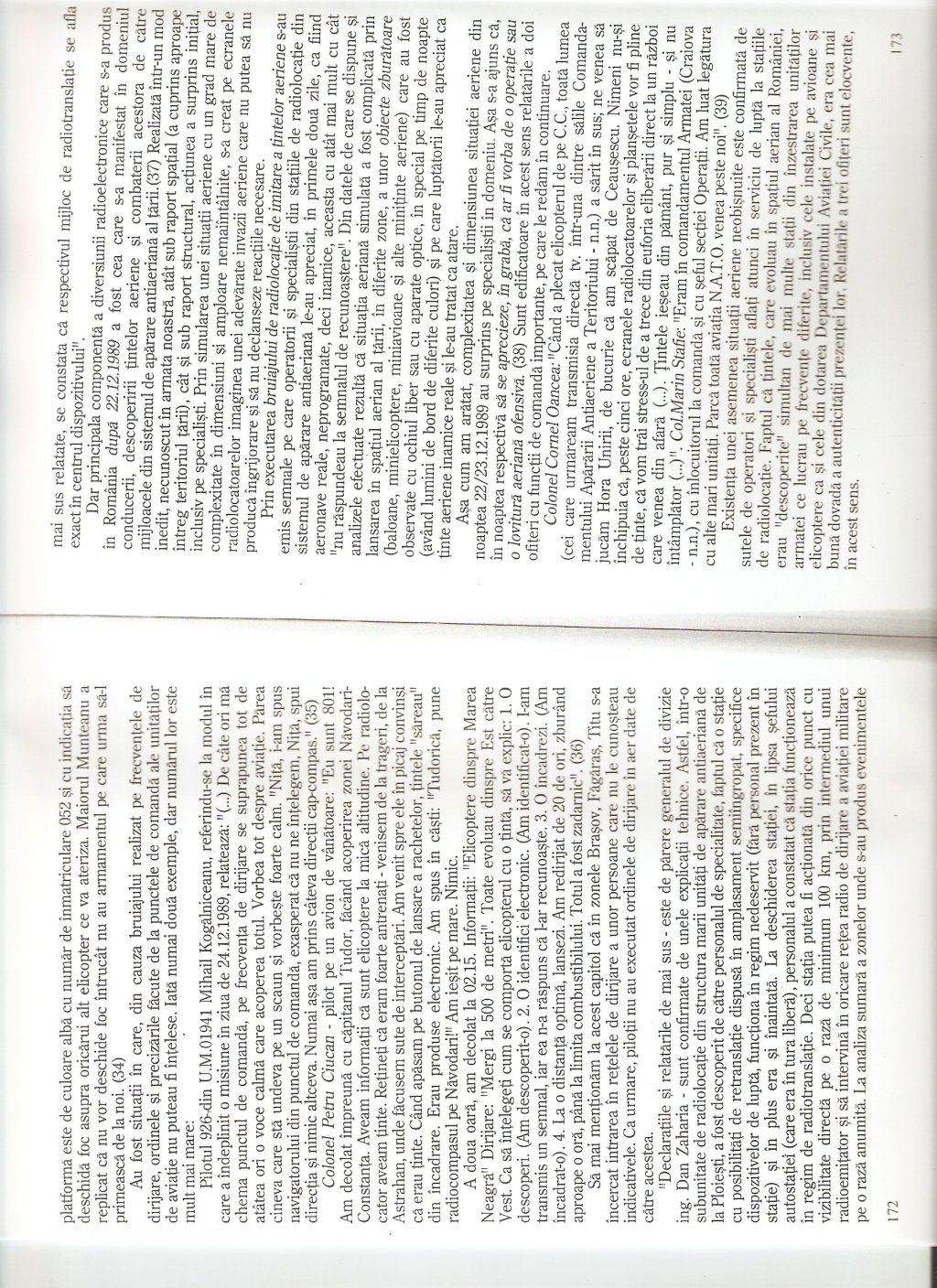













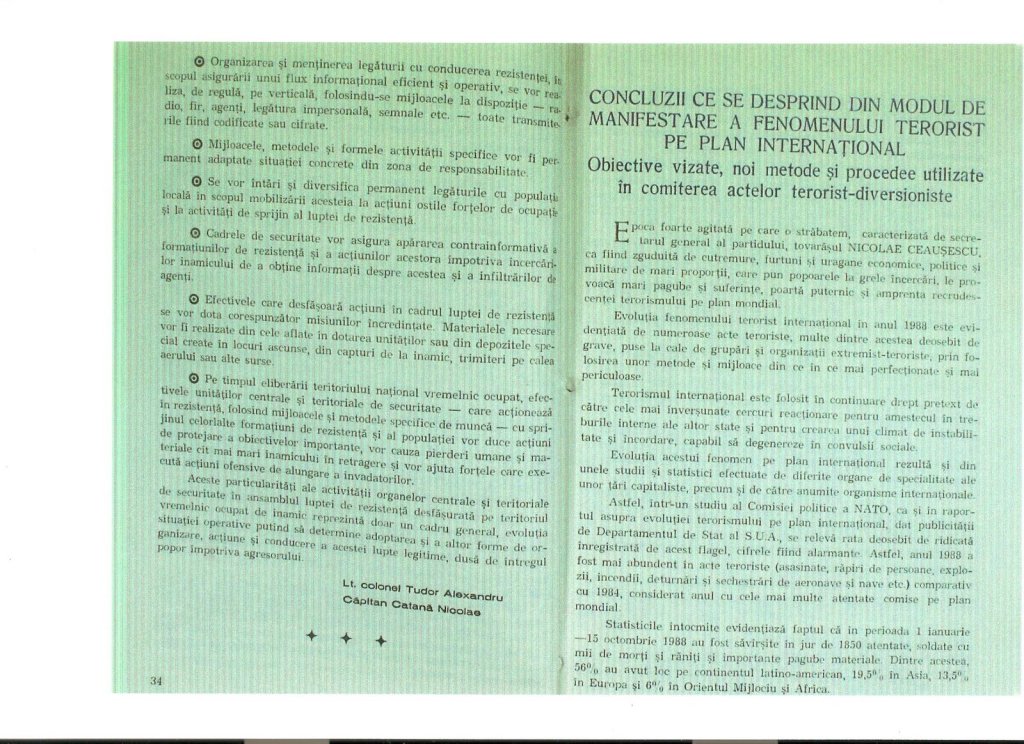






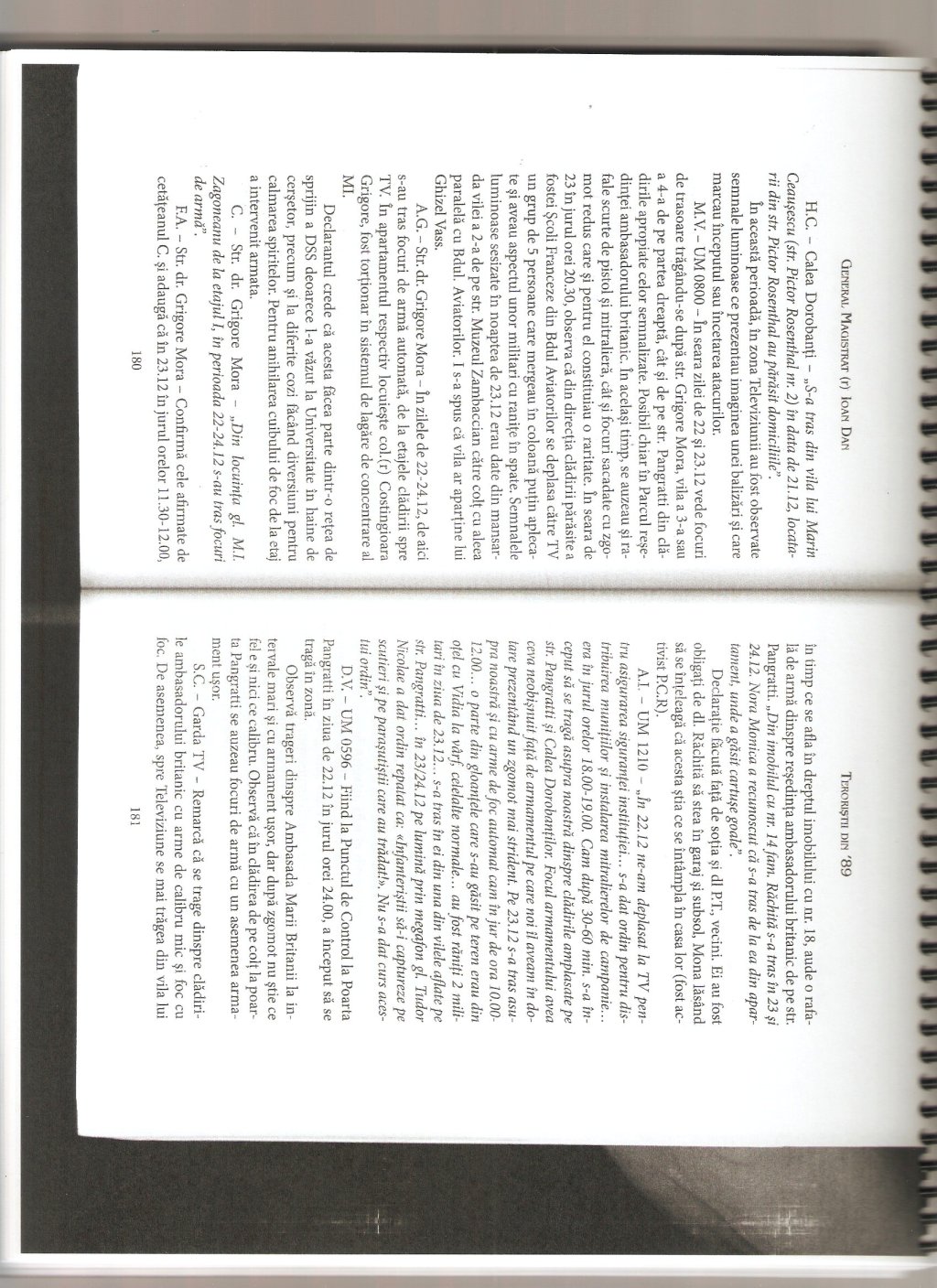
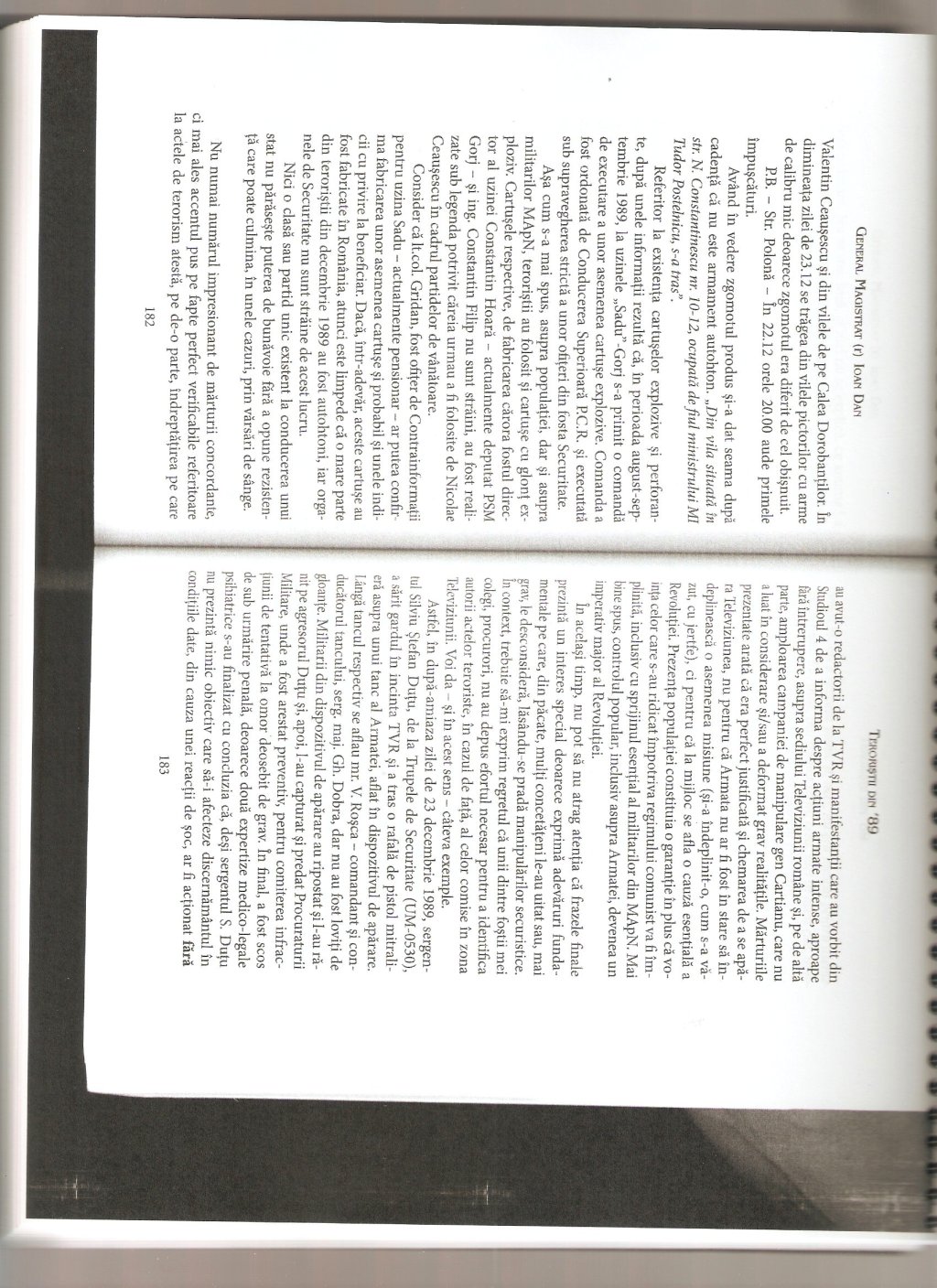














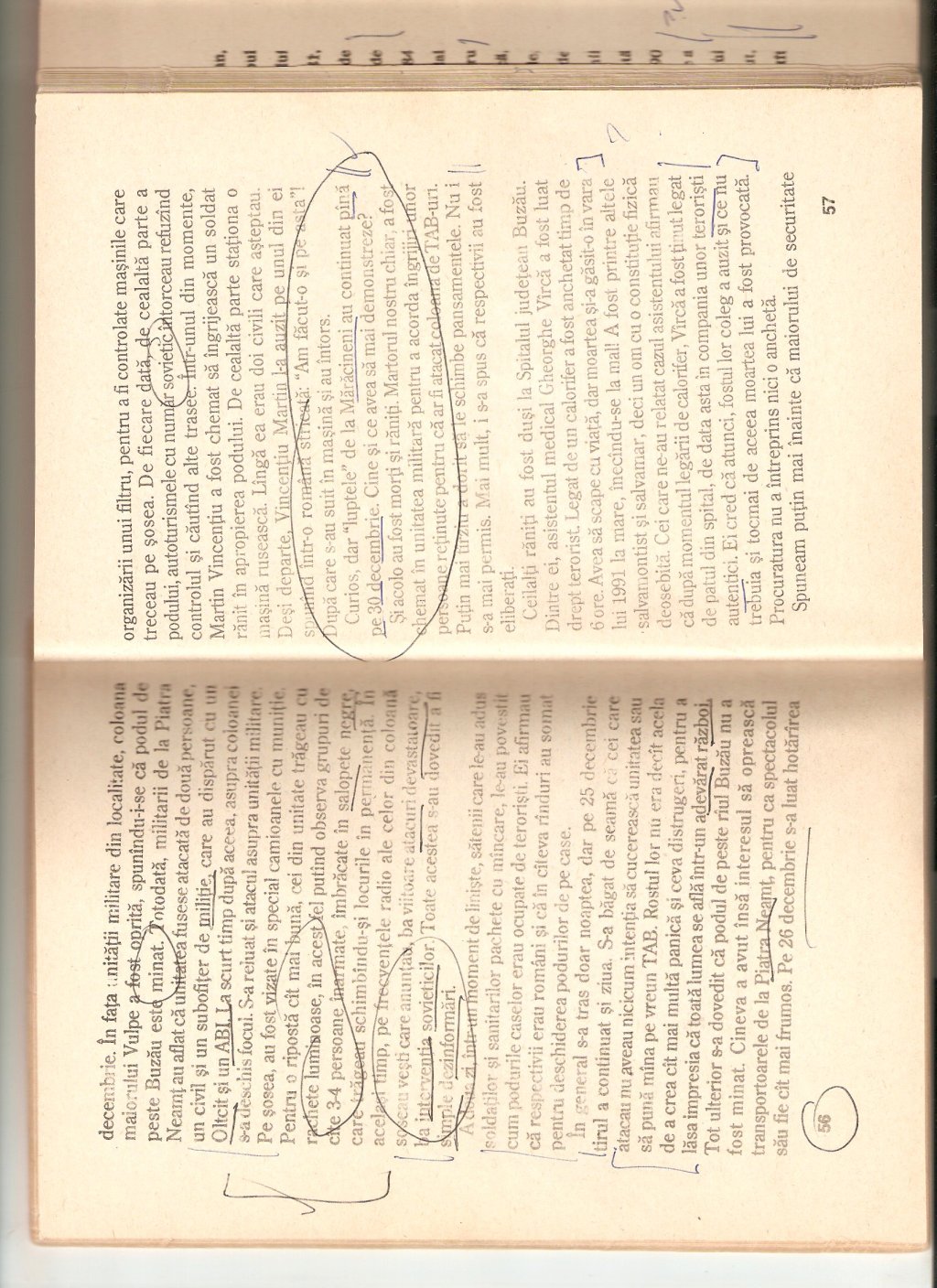











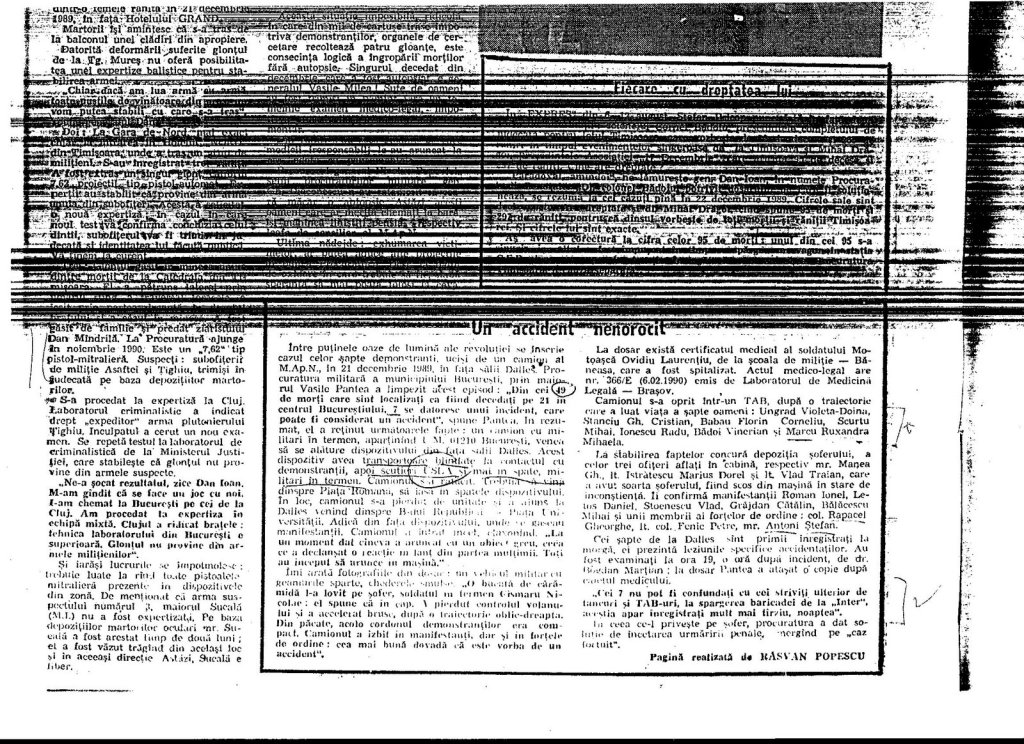


 a Crematorium in Bucharest of 43 bodies belonging to people who were killed in Timi
a Crematorium in Bucharest of 43 bodies belonging to people who were killed in Timi

















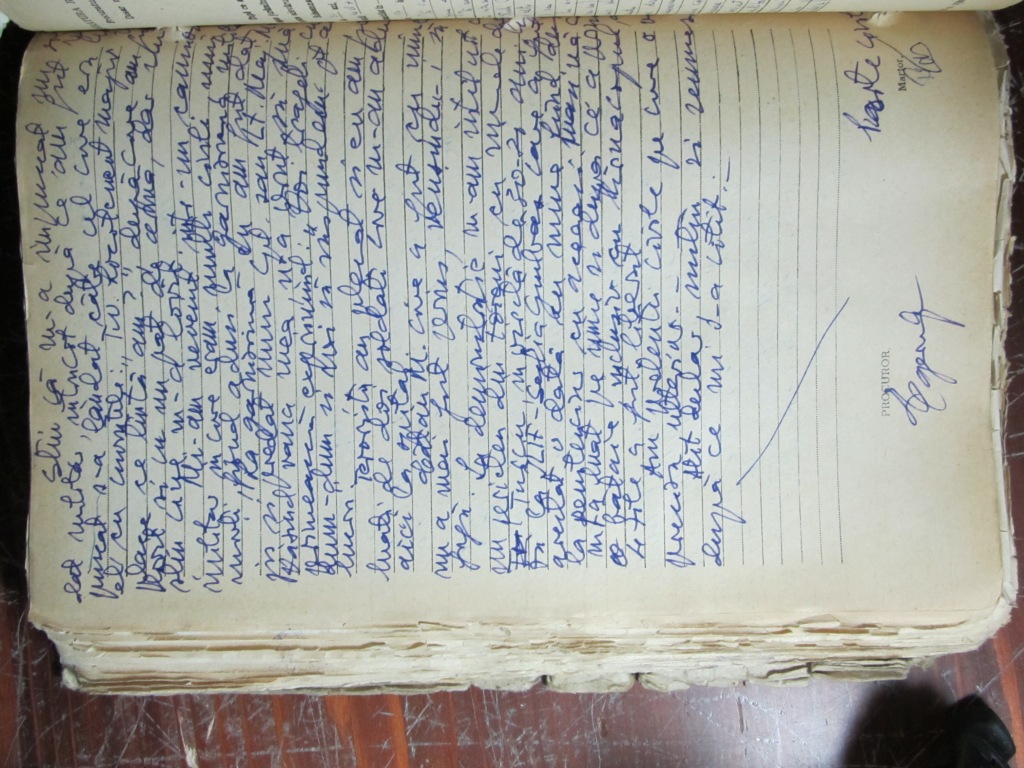


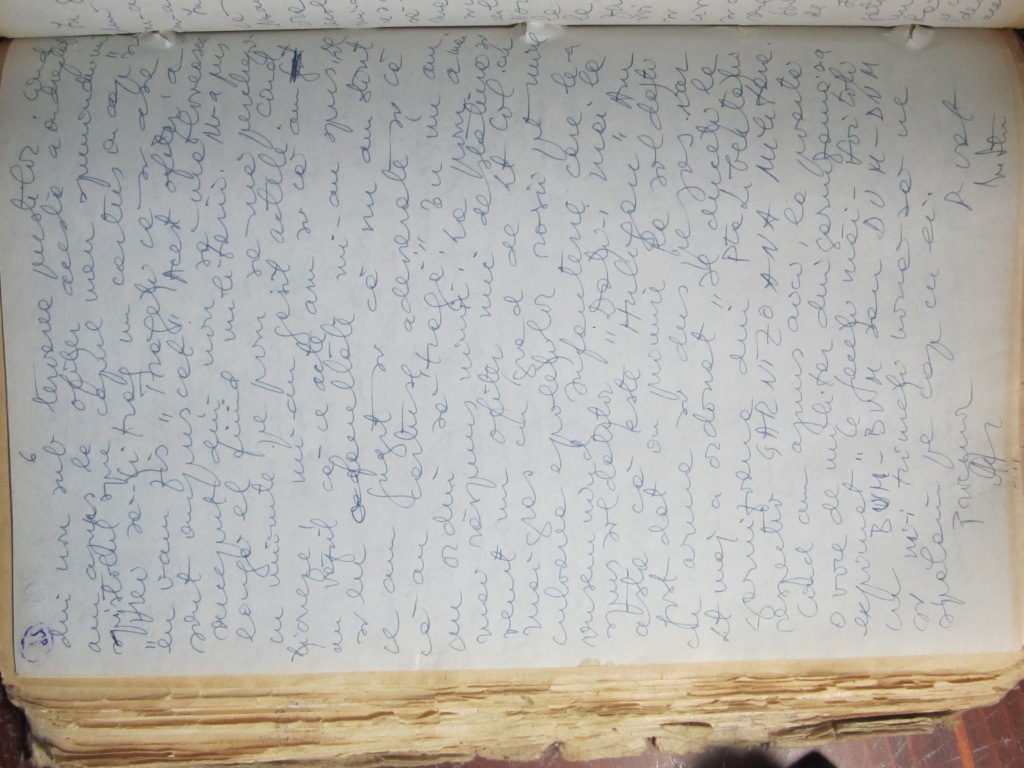
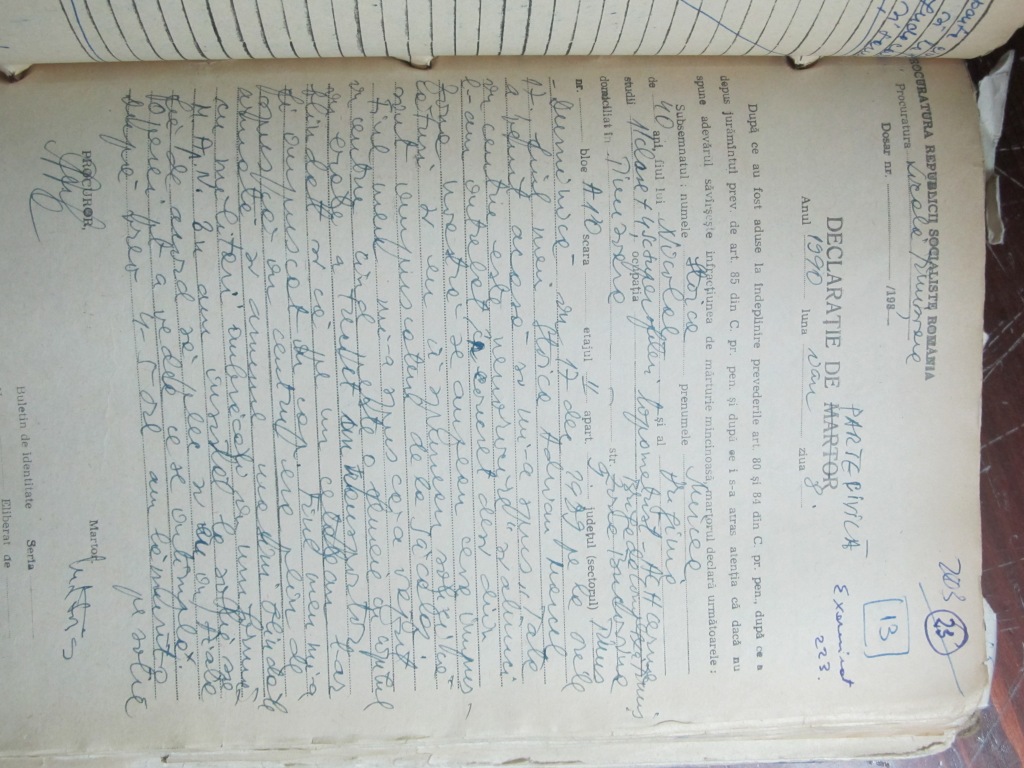

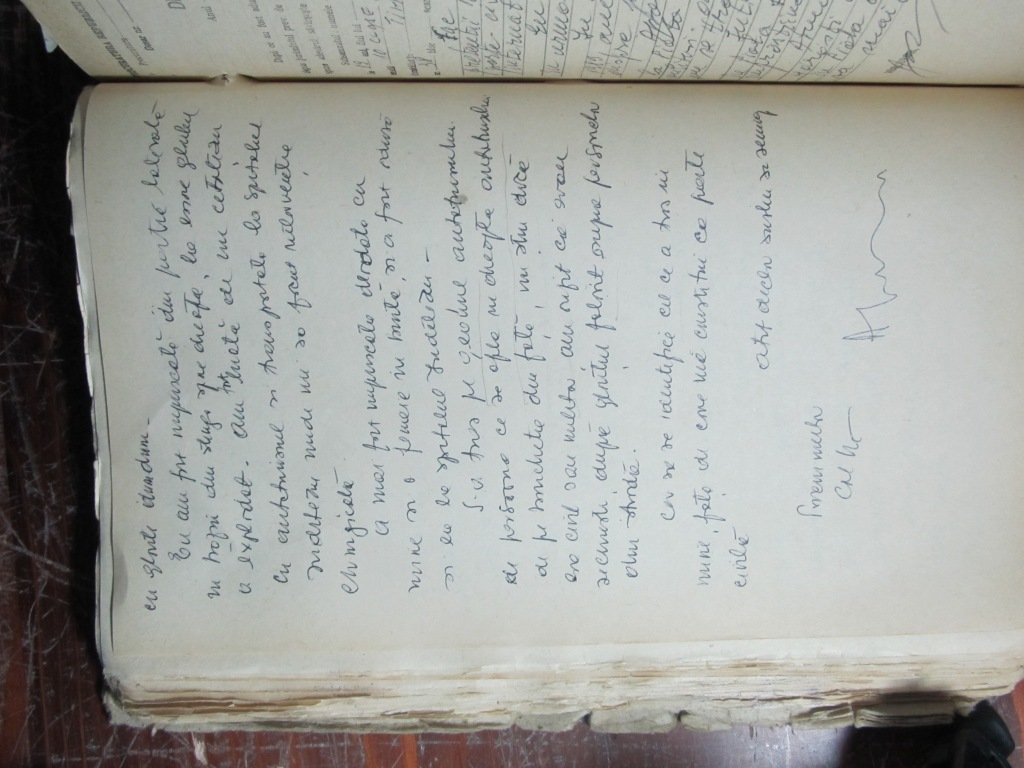
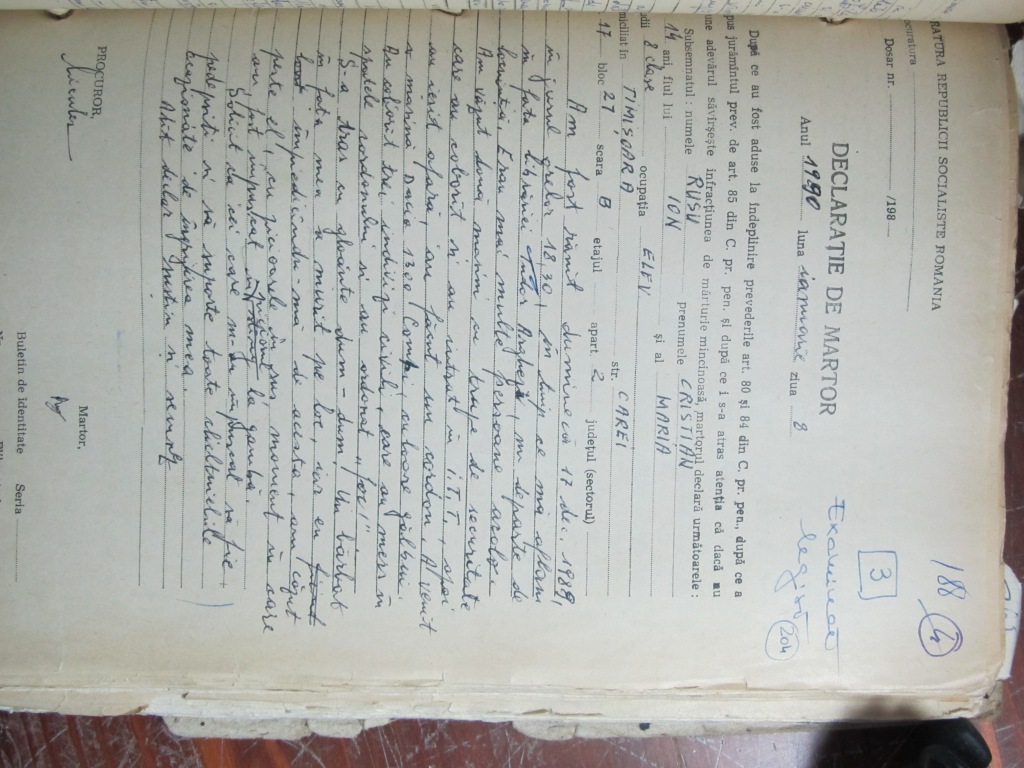

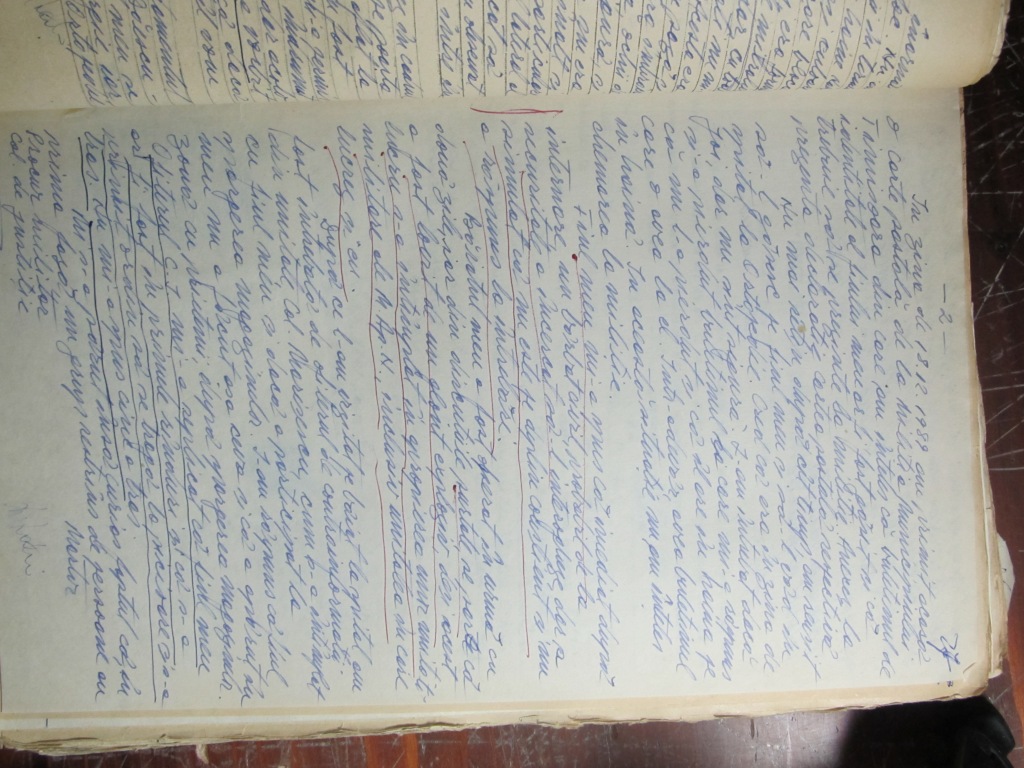
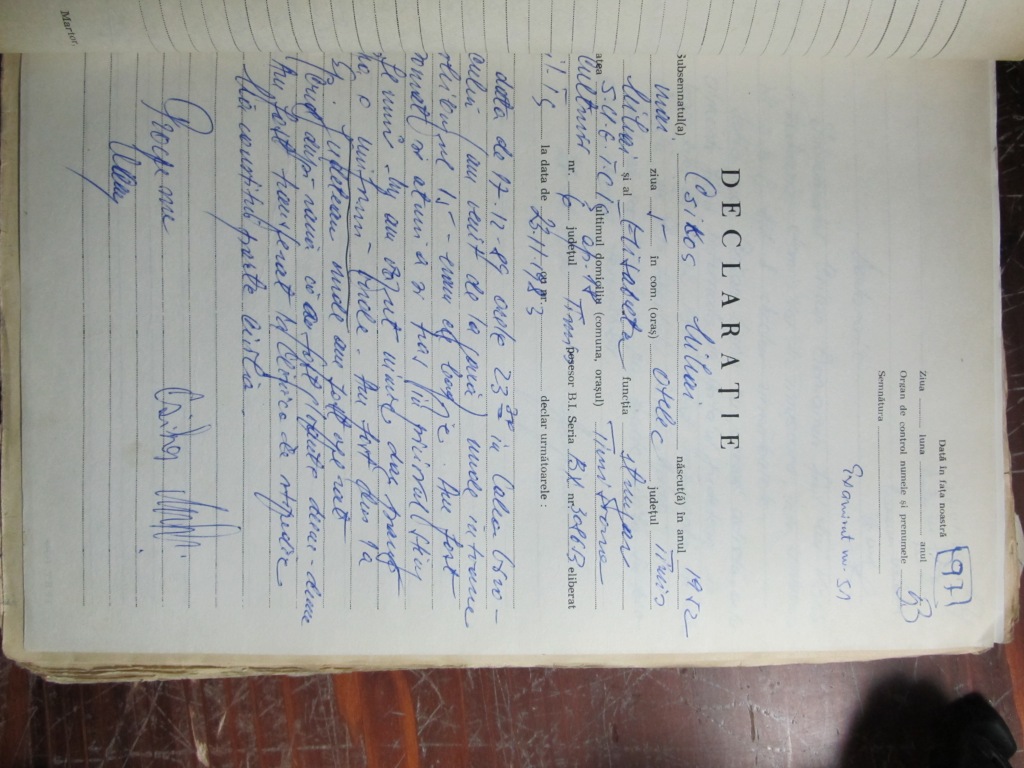
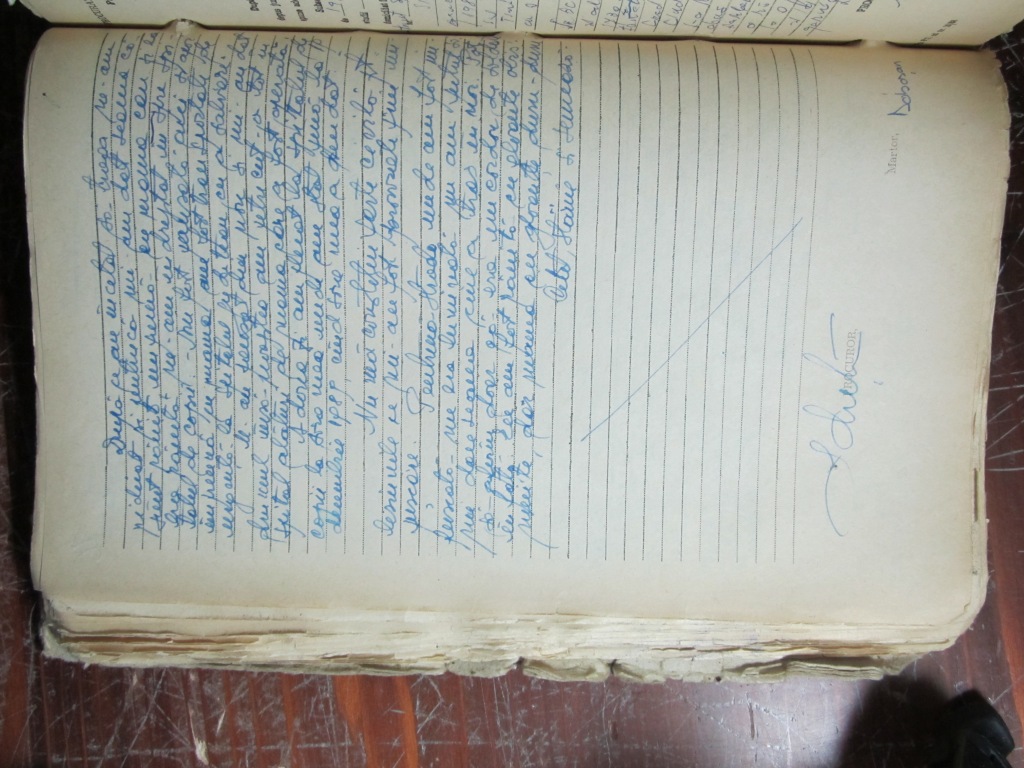
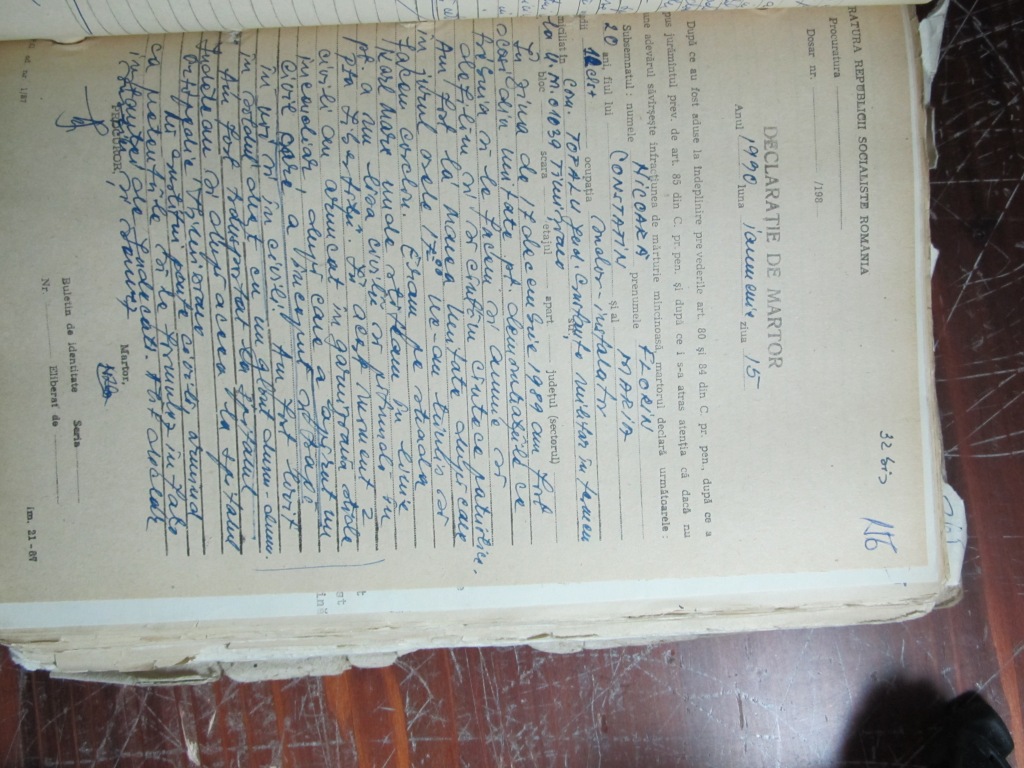
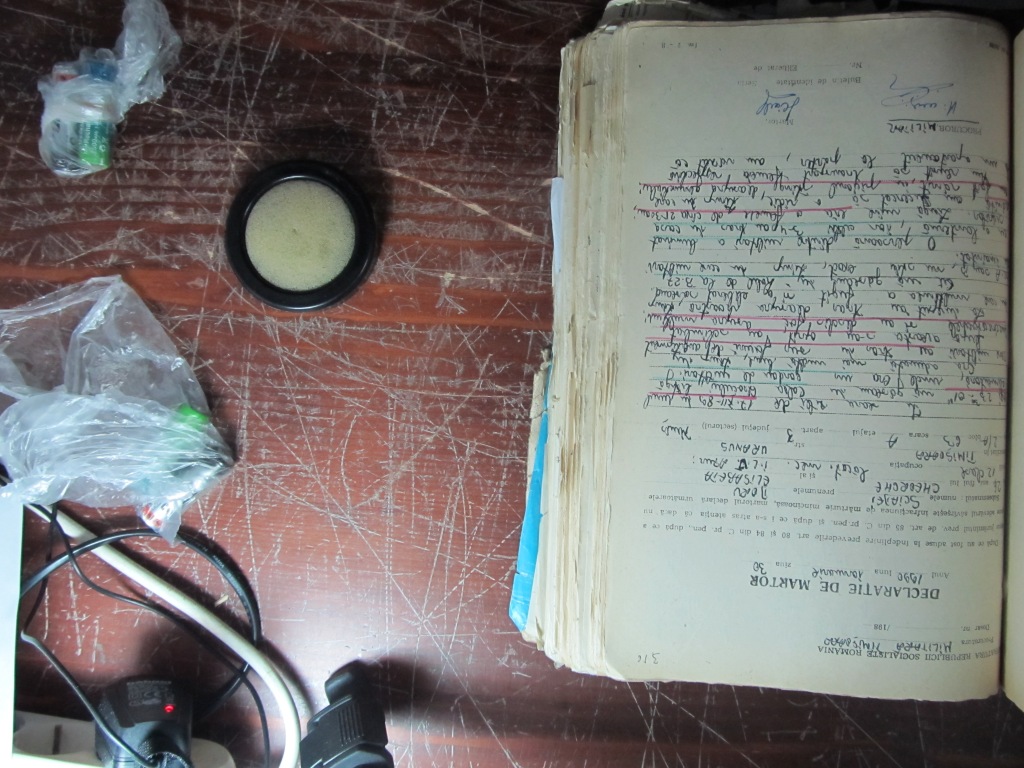




























Toatei corpurile delicte au fost adunate si inventariate la Institutul de criminalistica din Bucuresti. Procurorii militari au venit si le-au luat. Au fost duse pe strada Alexandru Sahia, unde era sediul Procuraturii. Voinea care acum se face ca nu stie avea biroul acolo. Alo, se aude!?